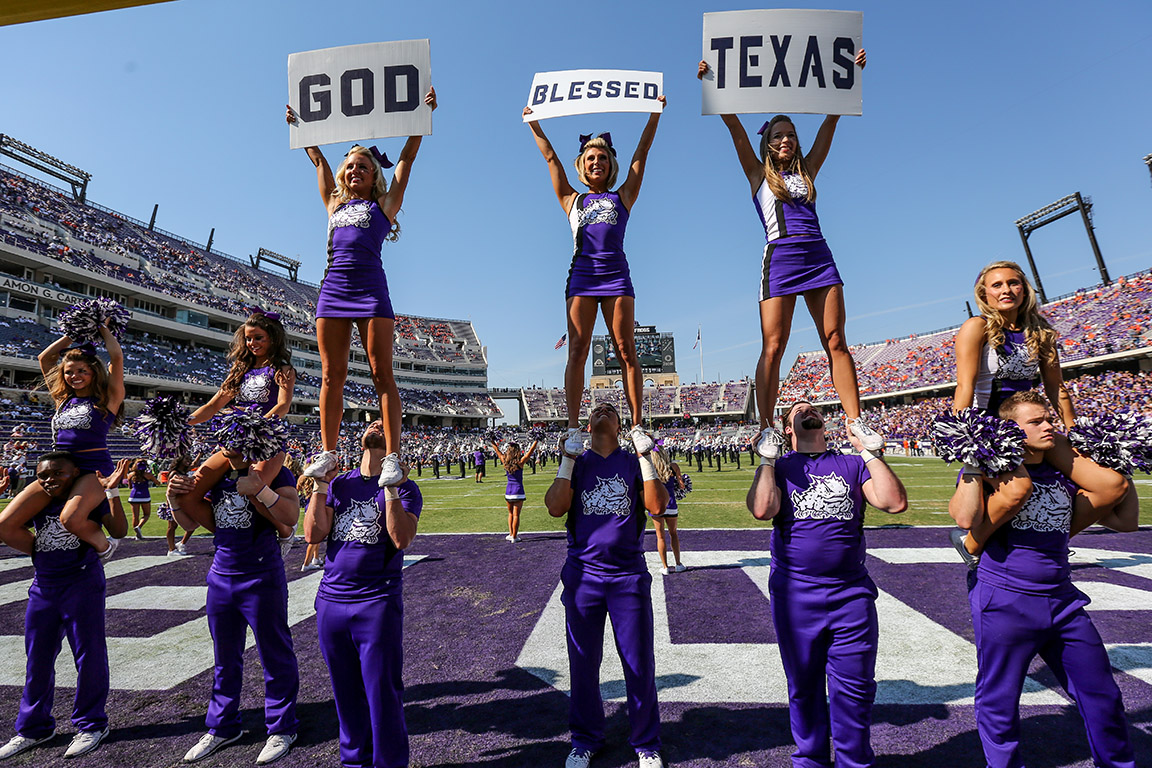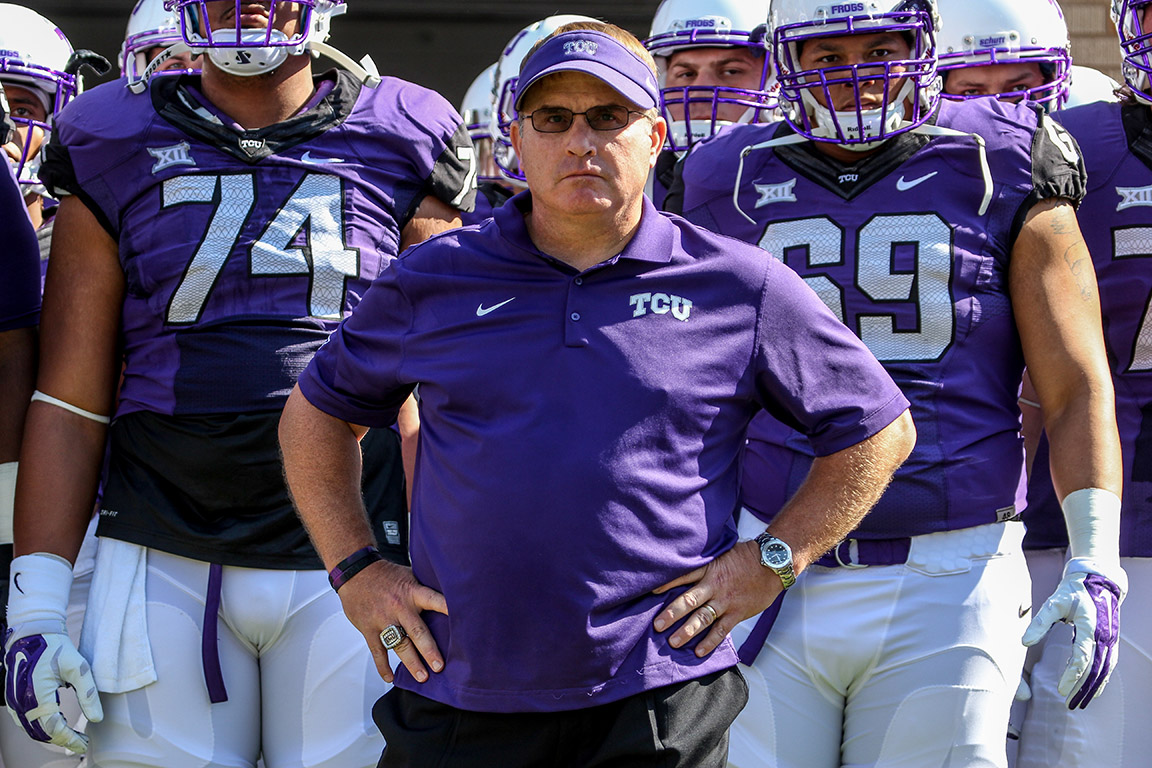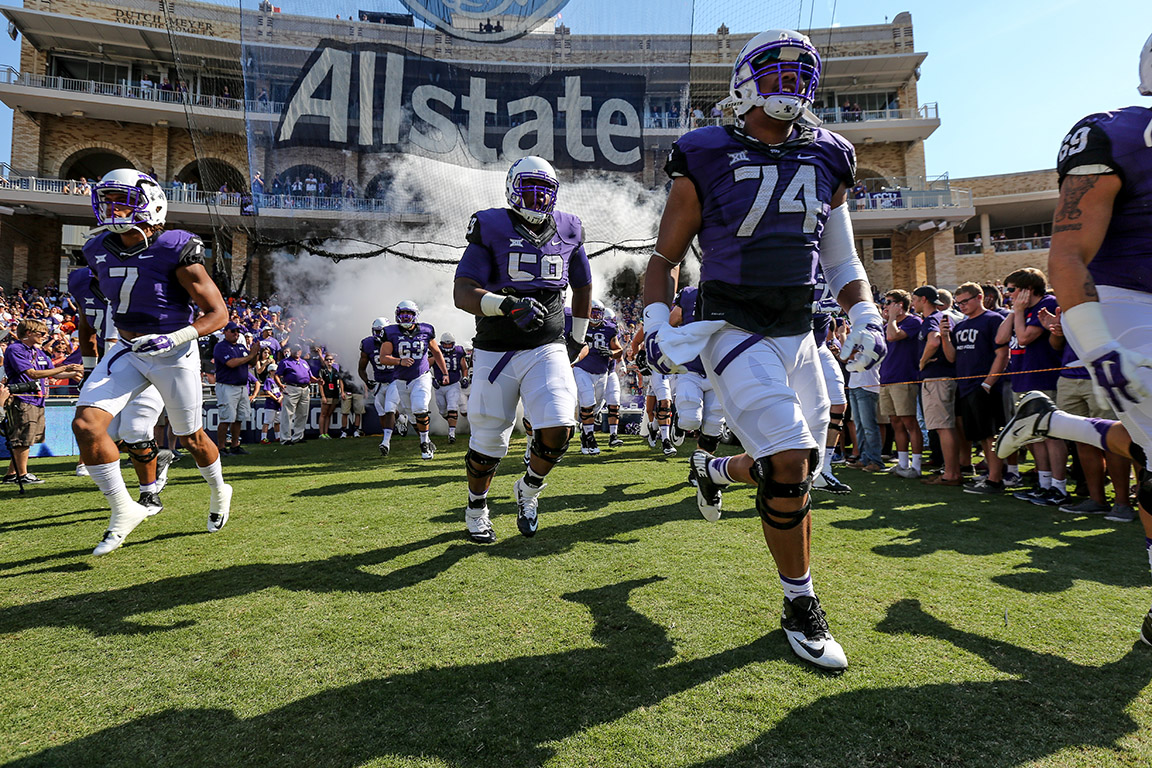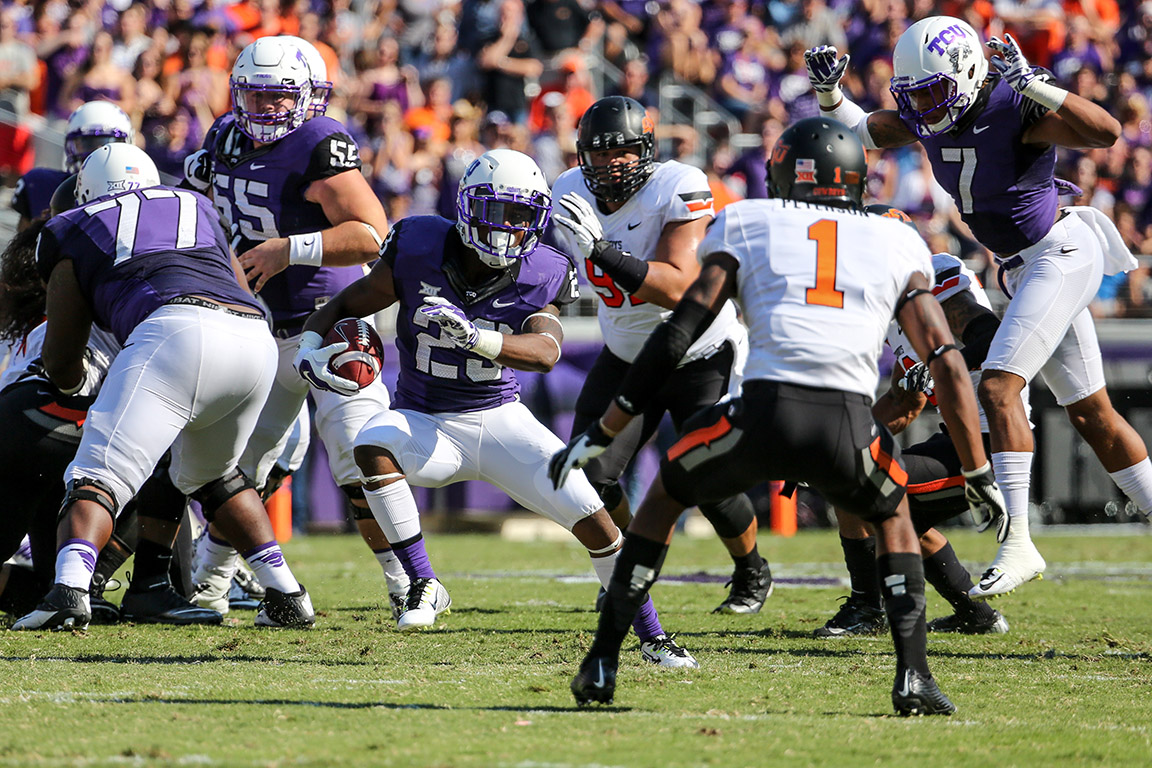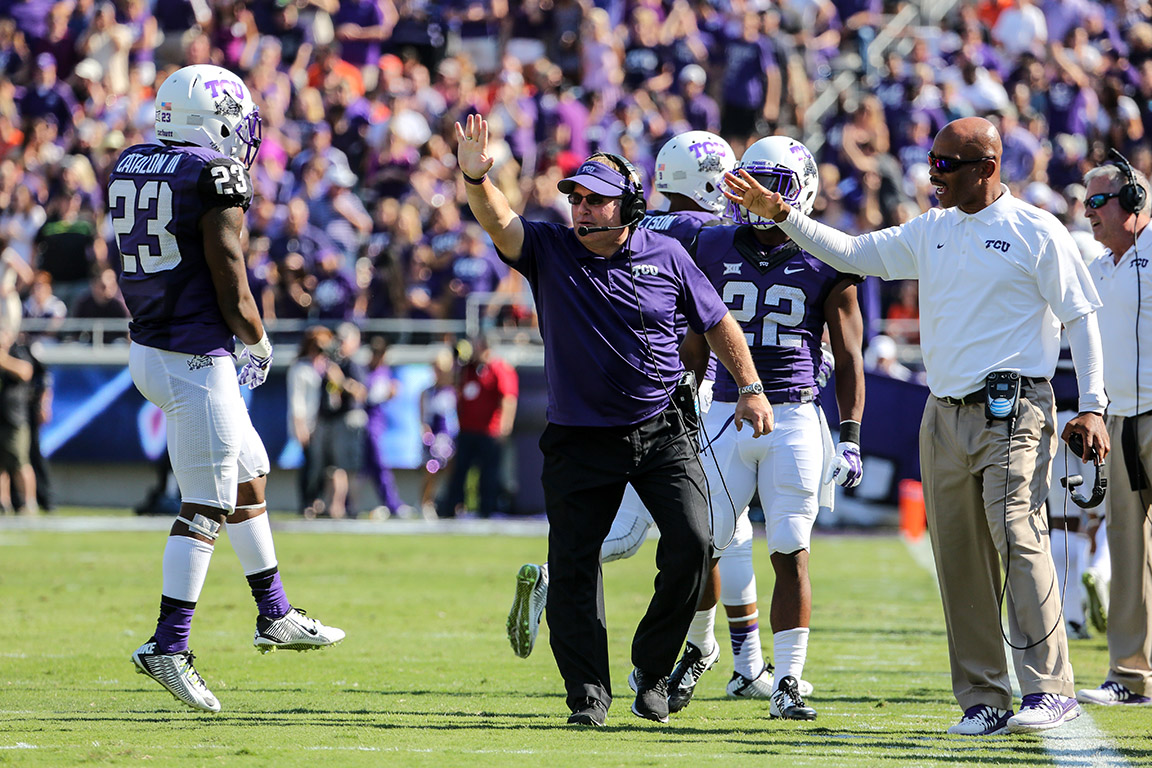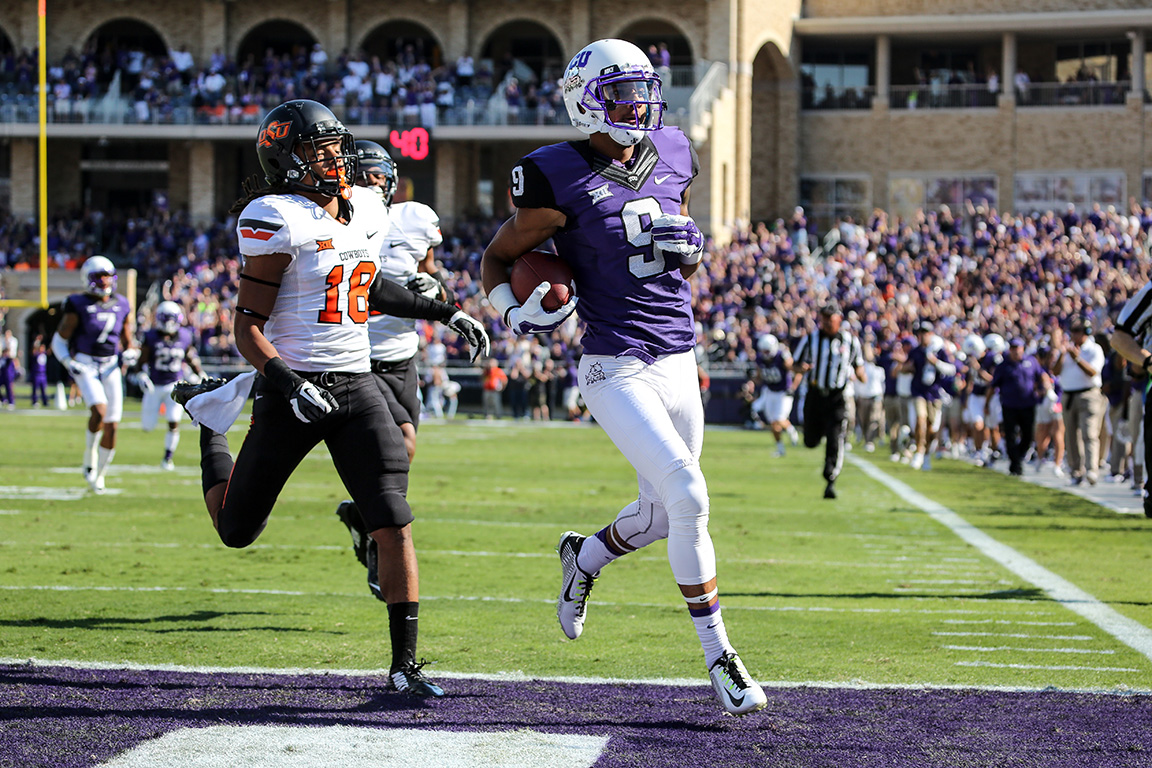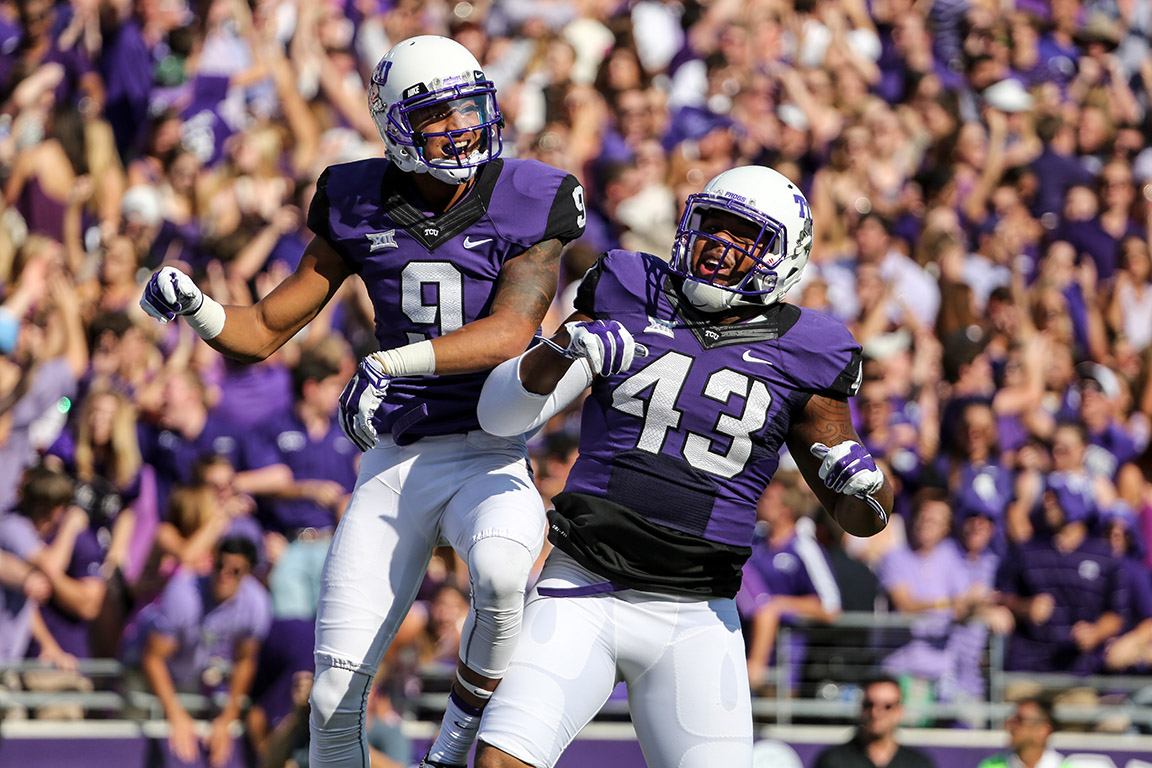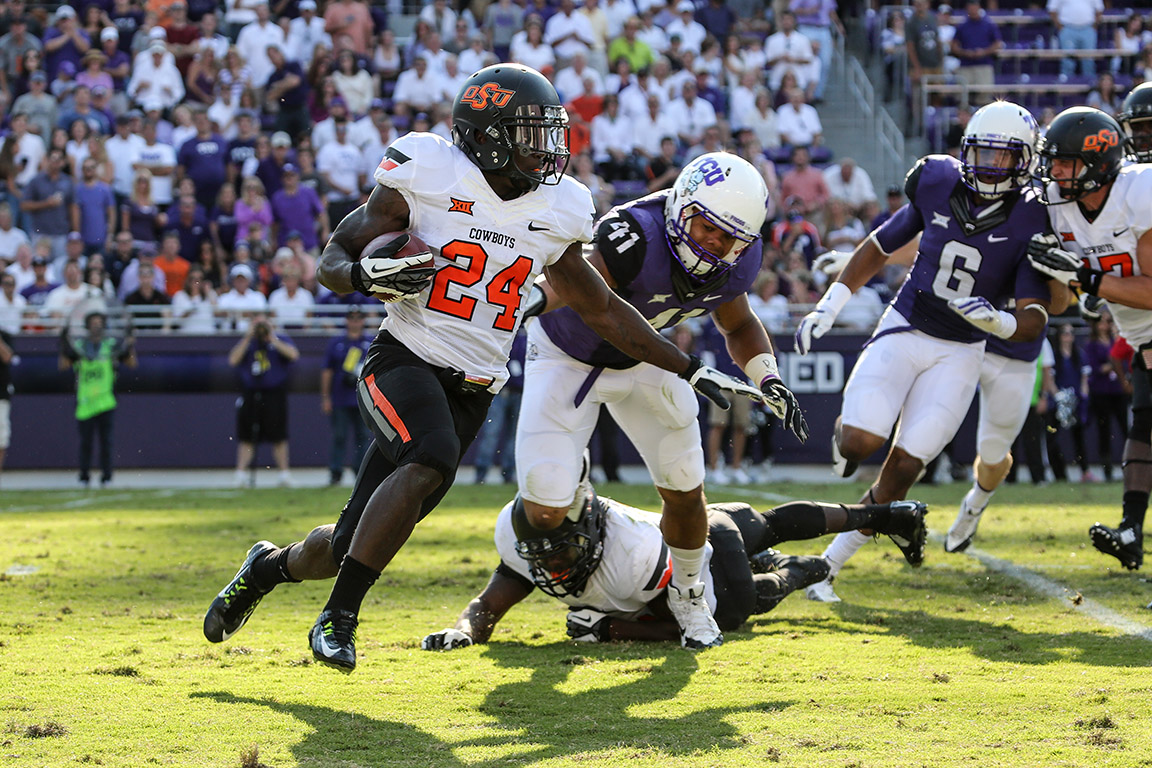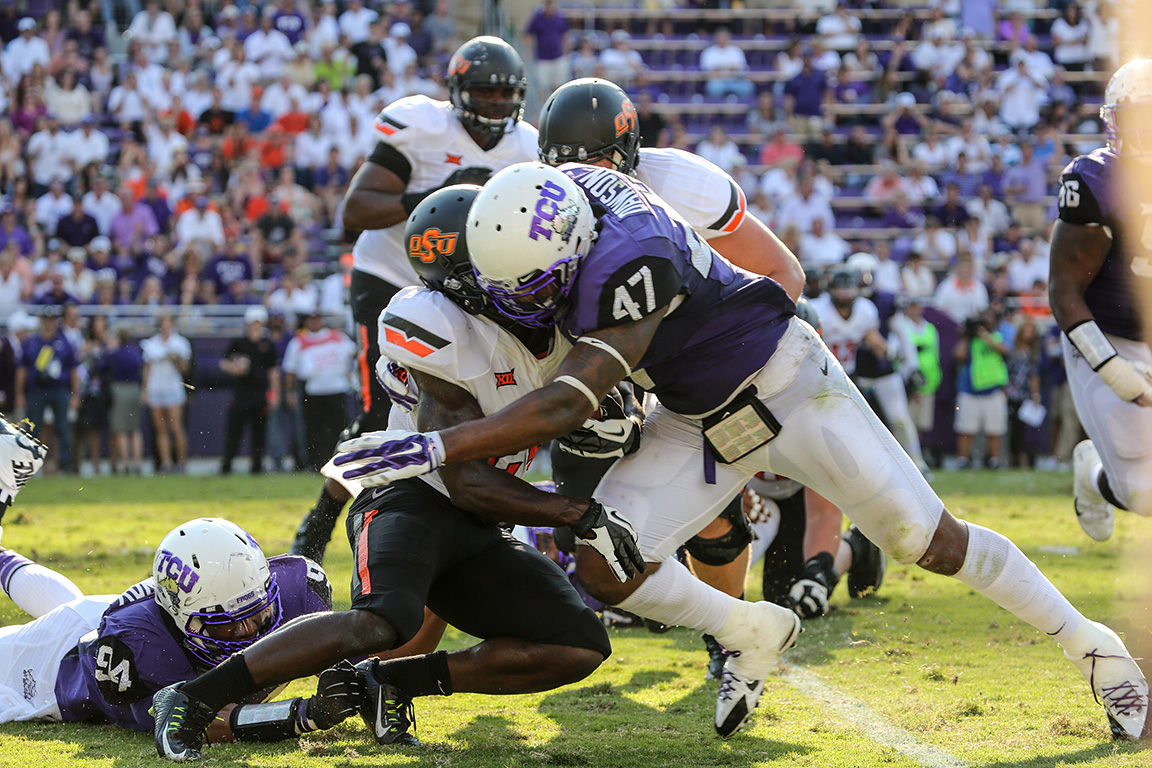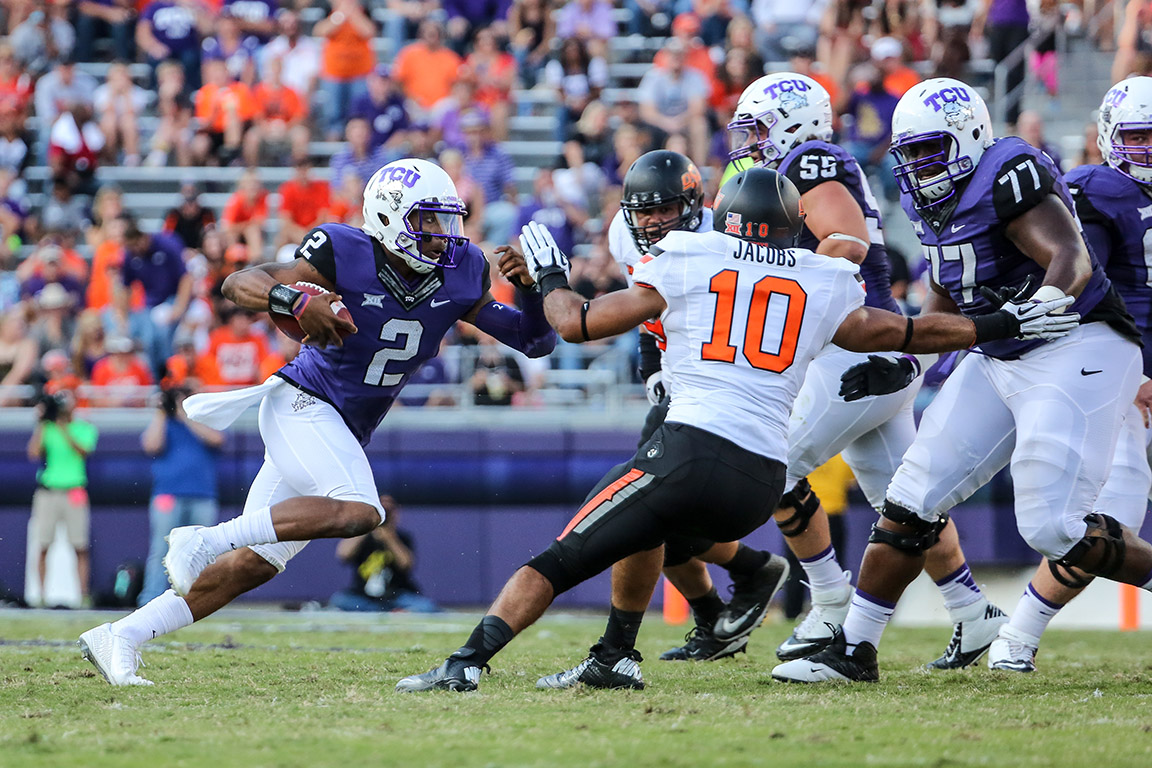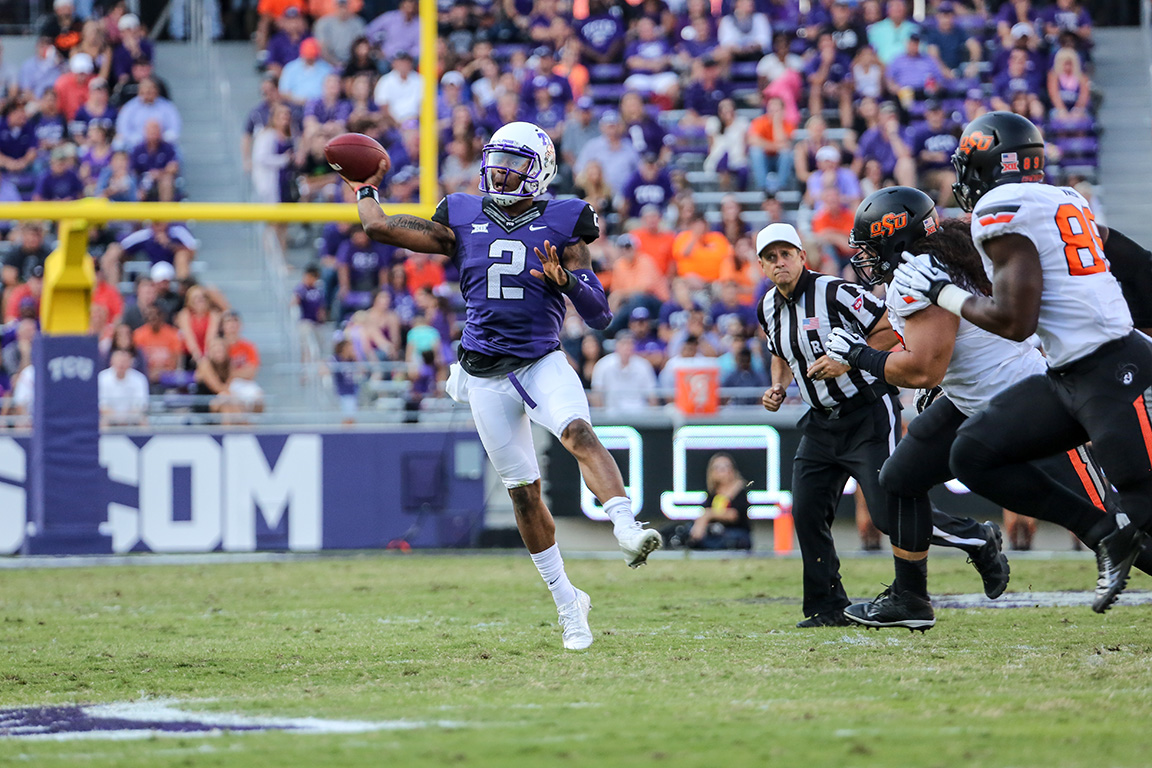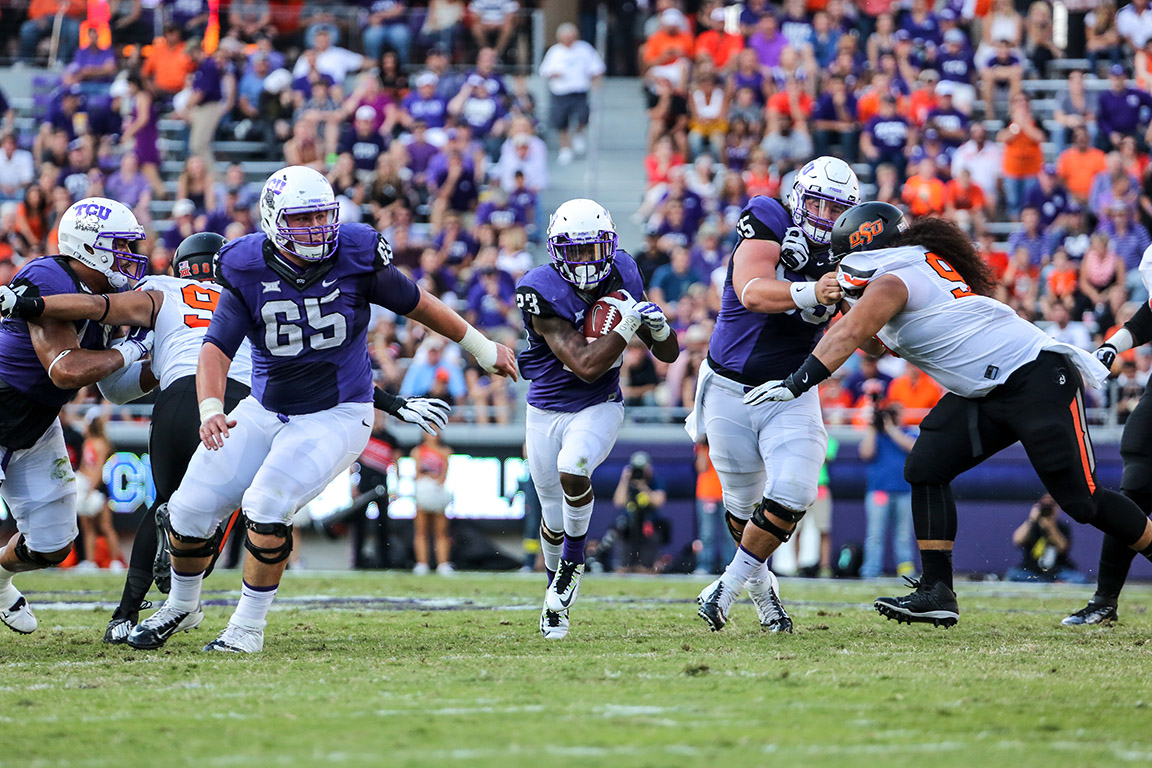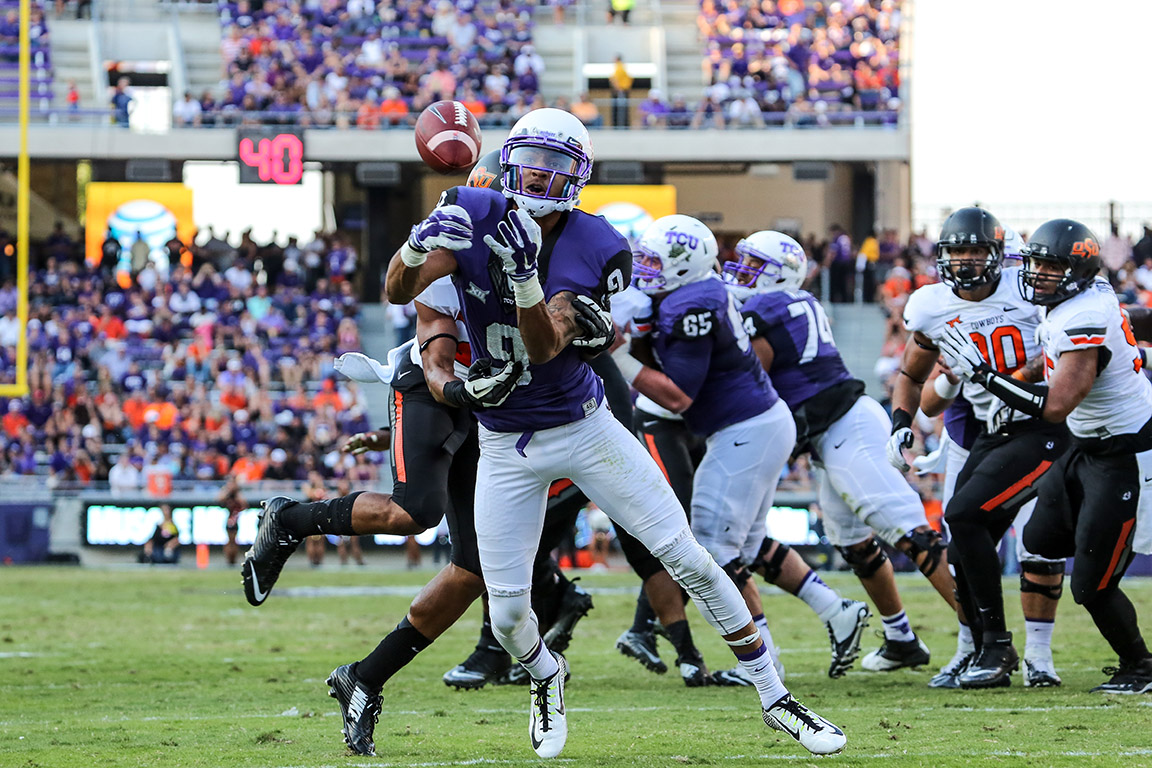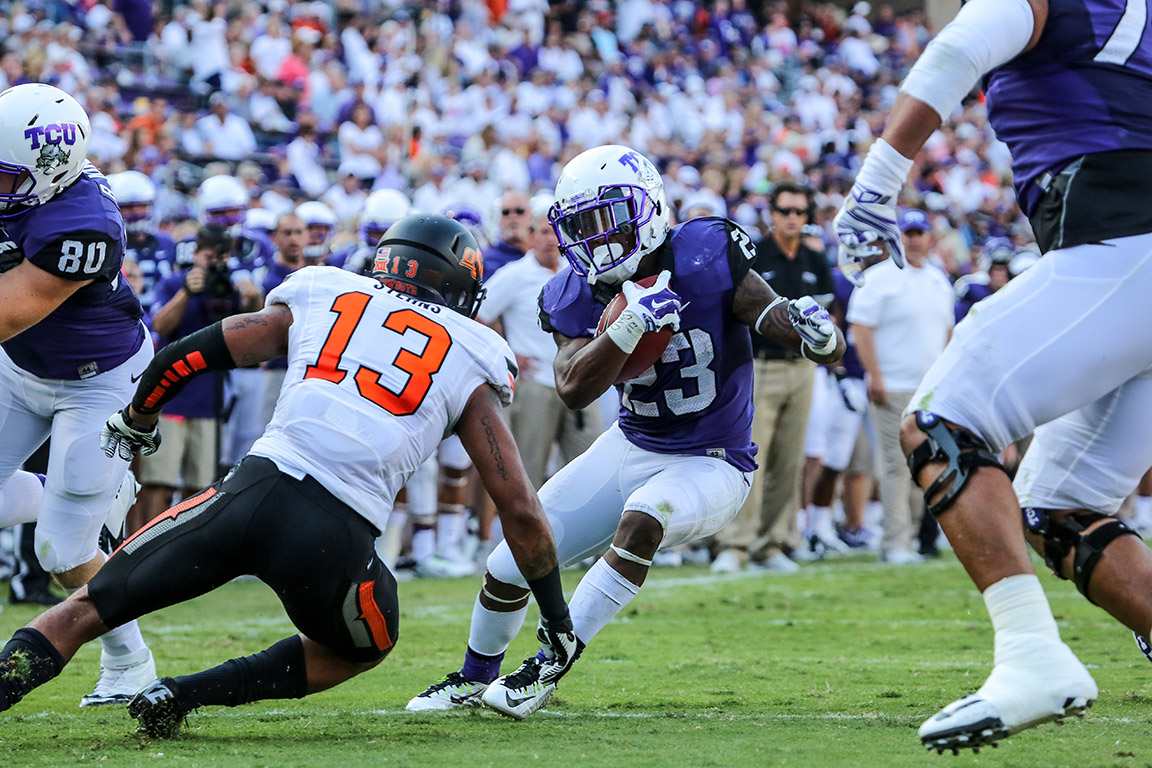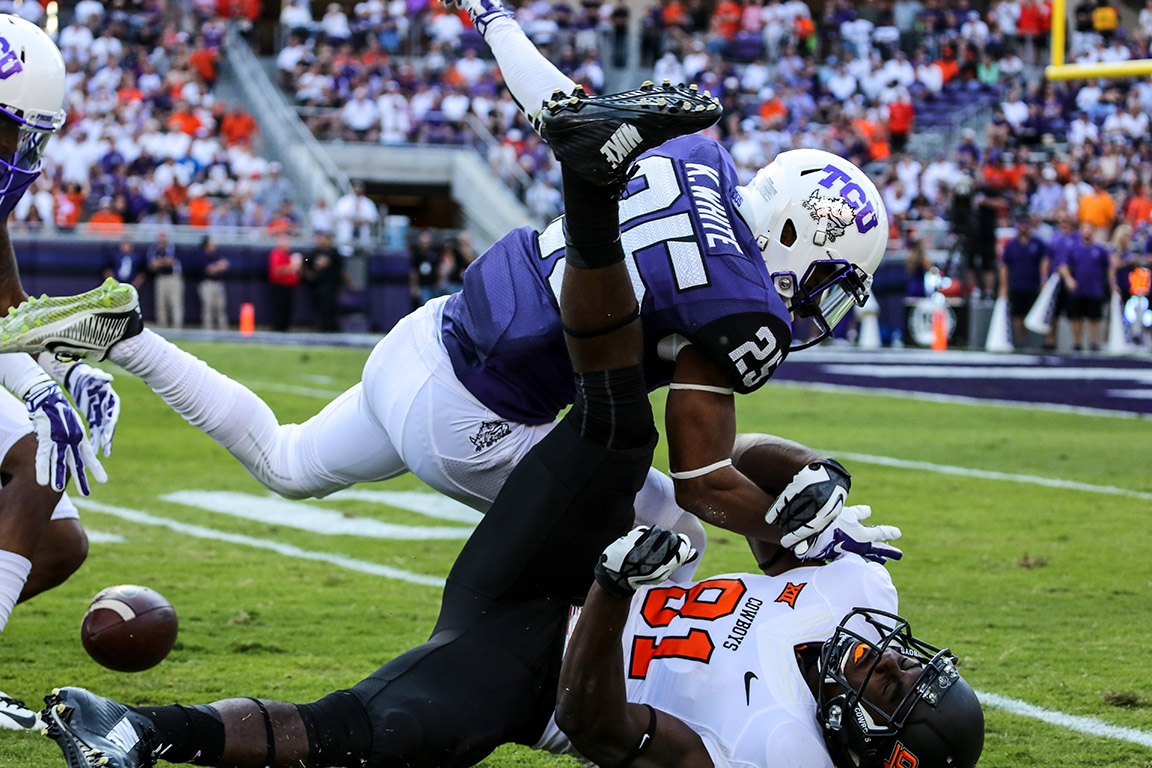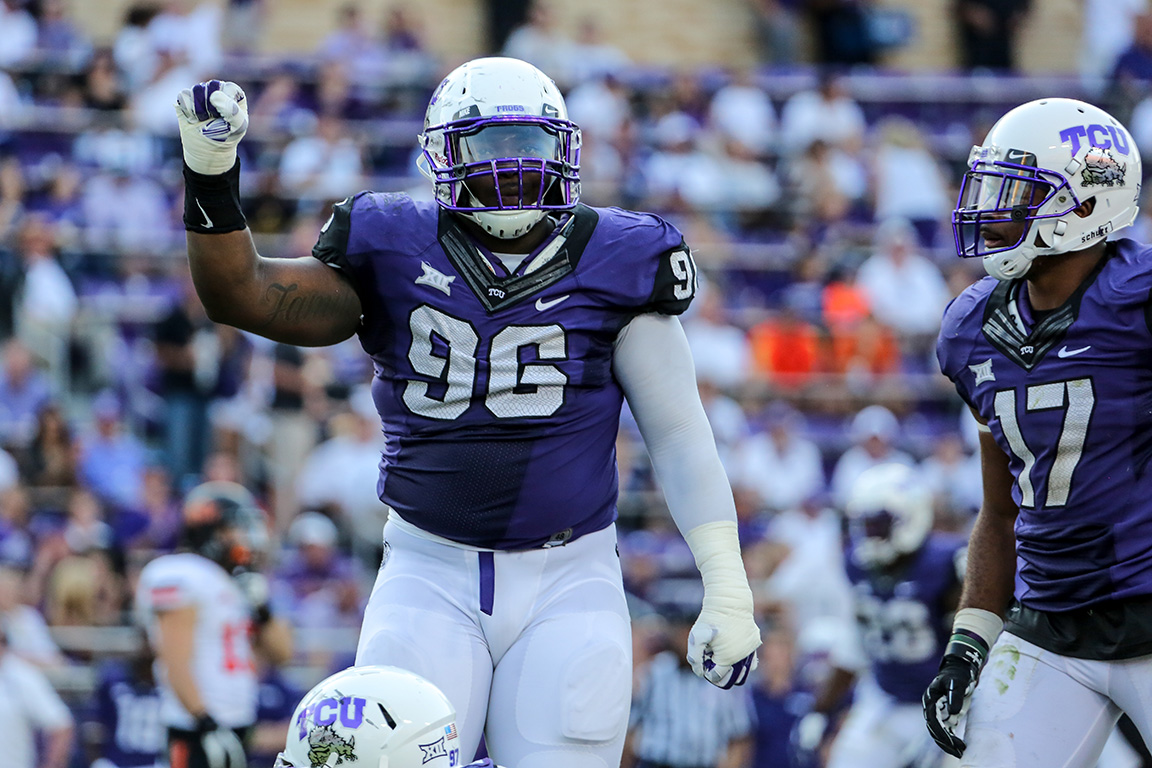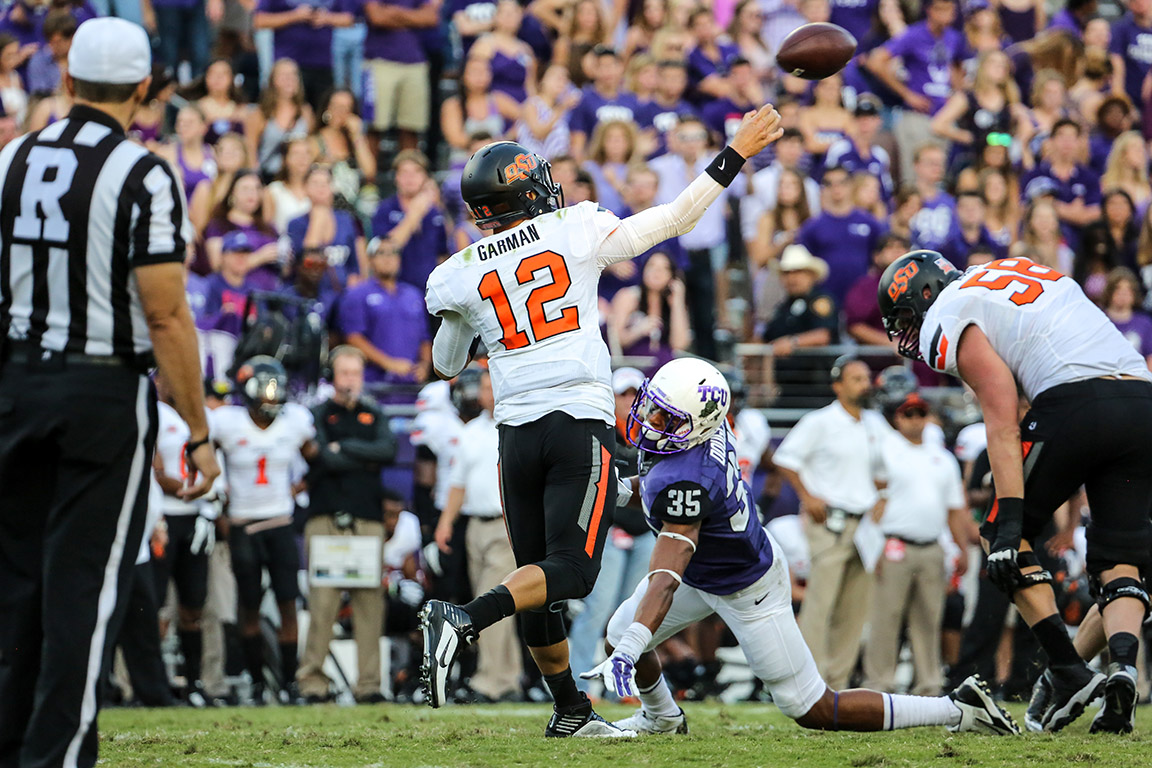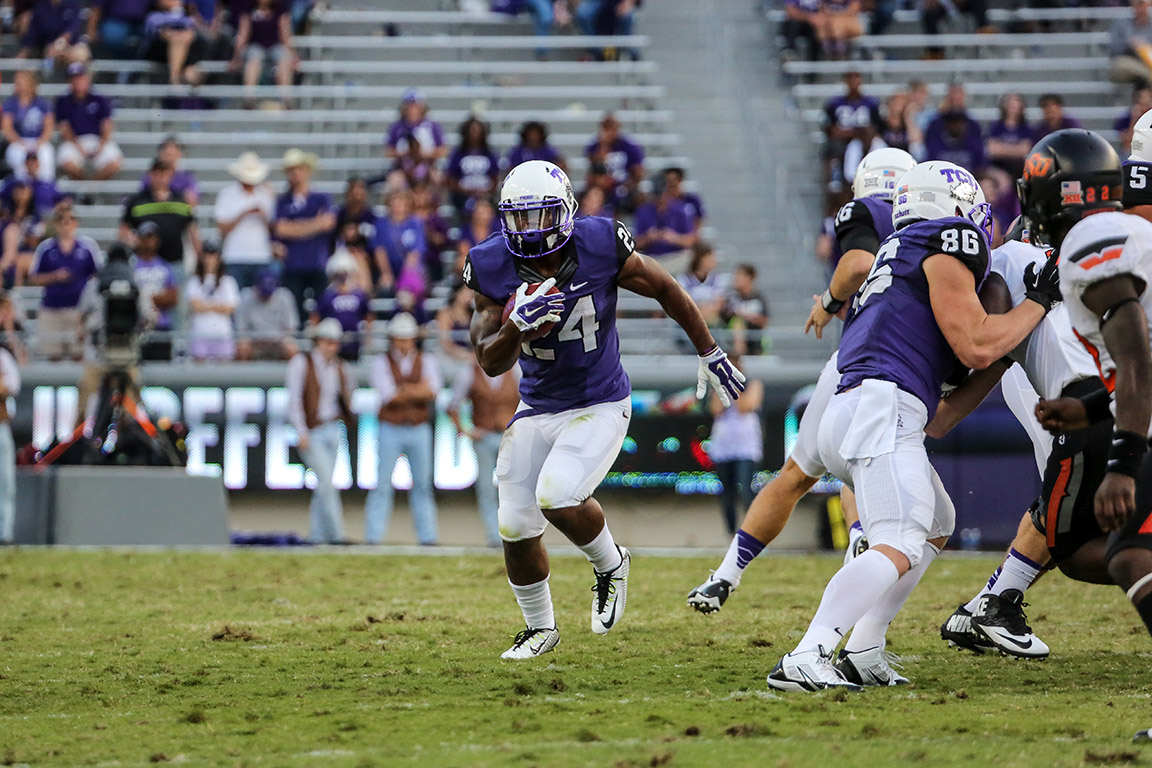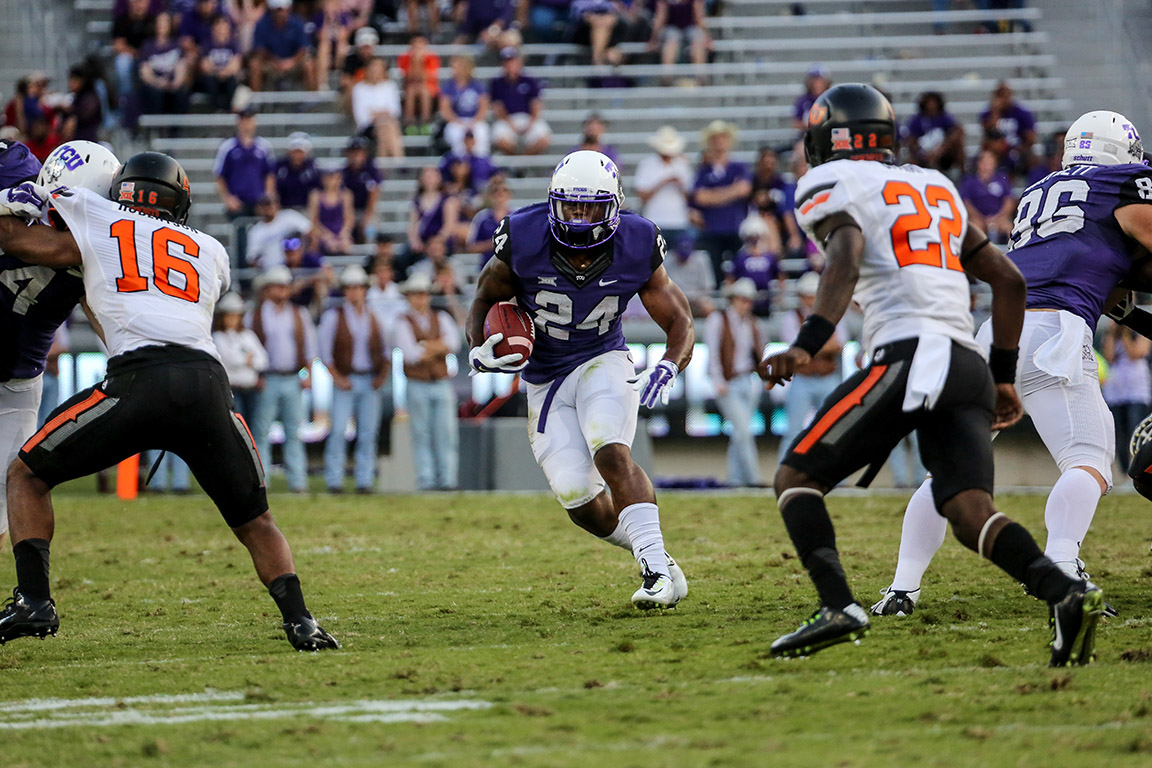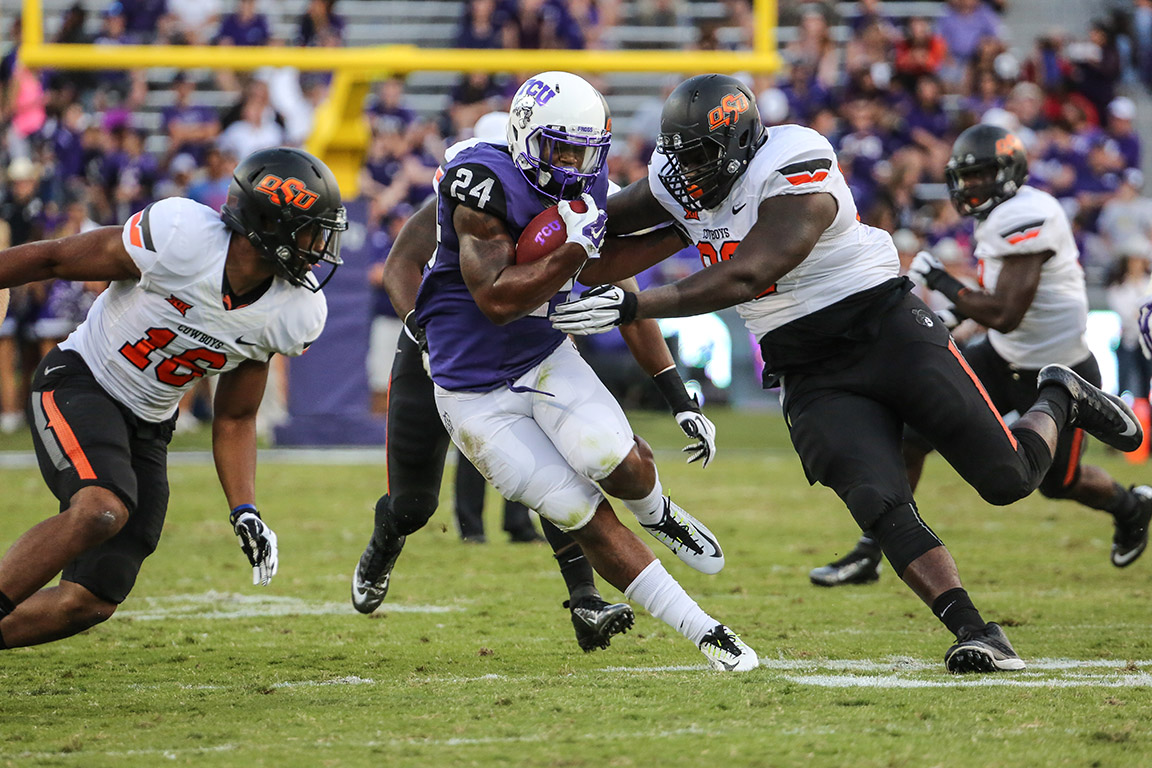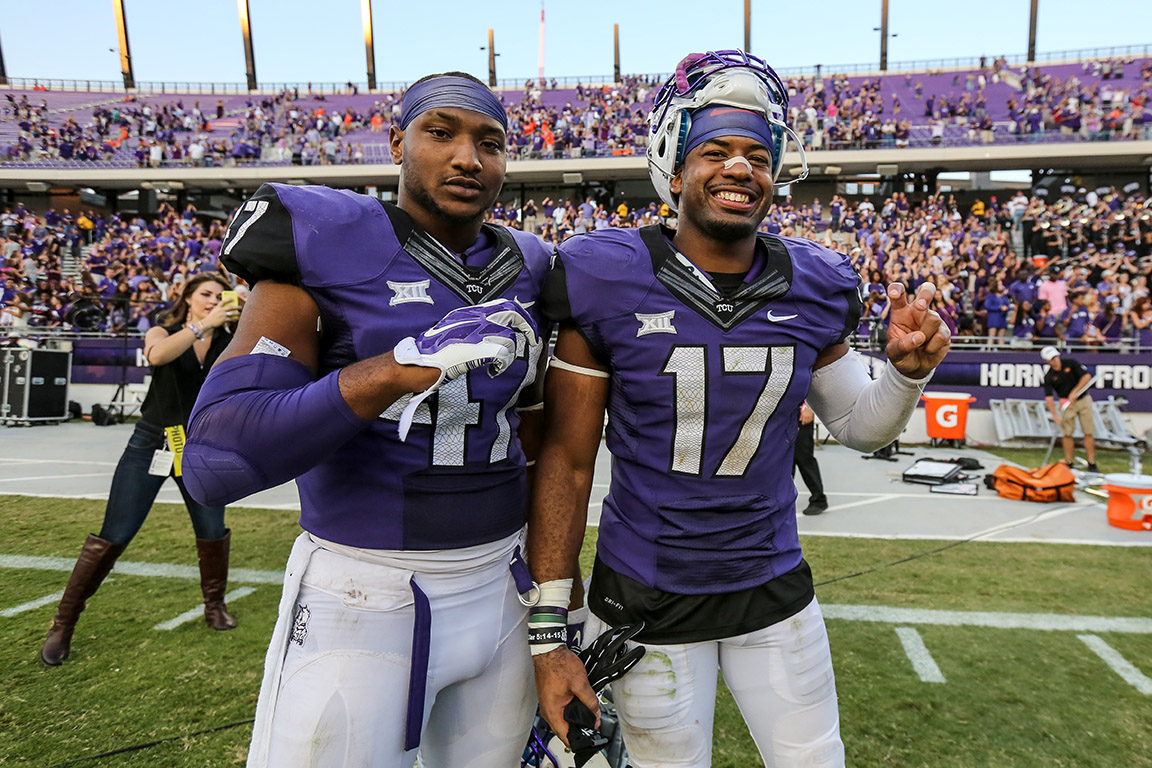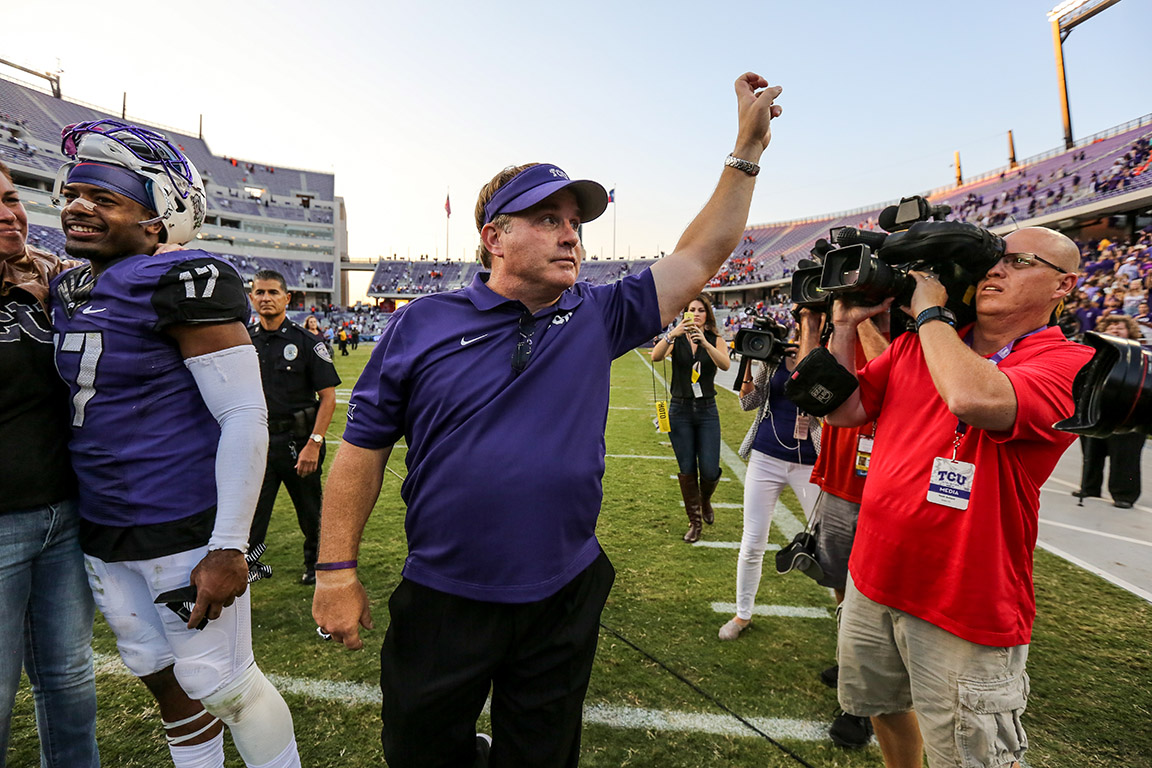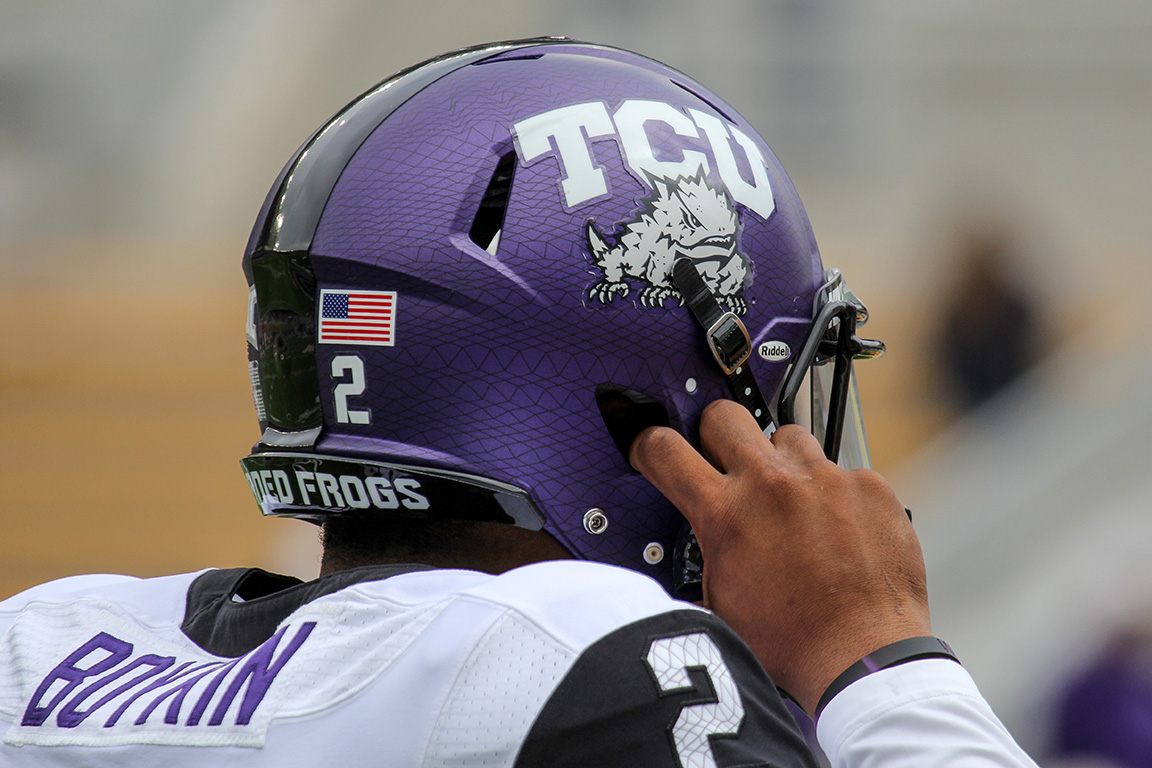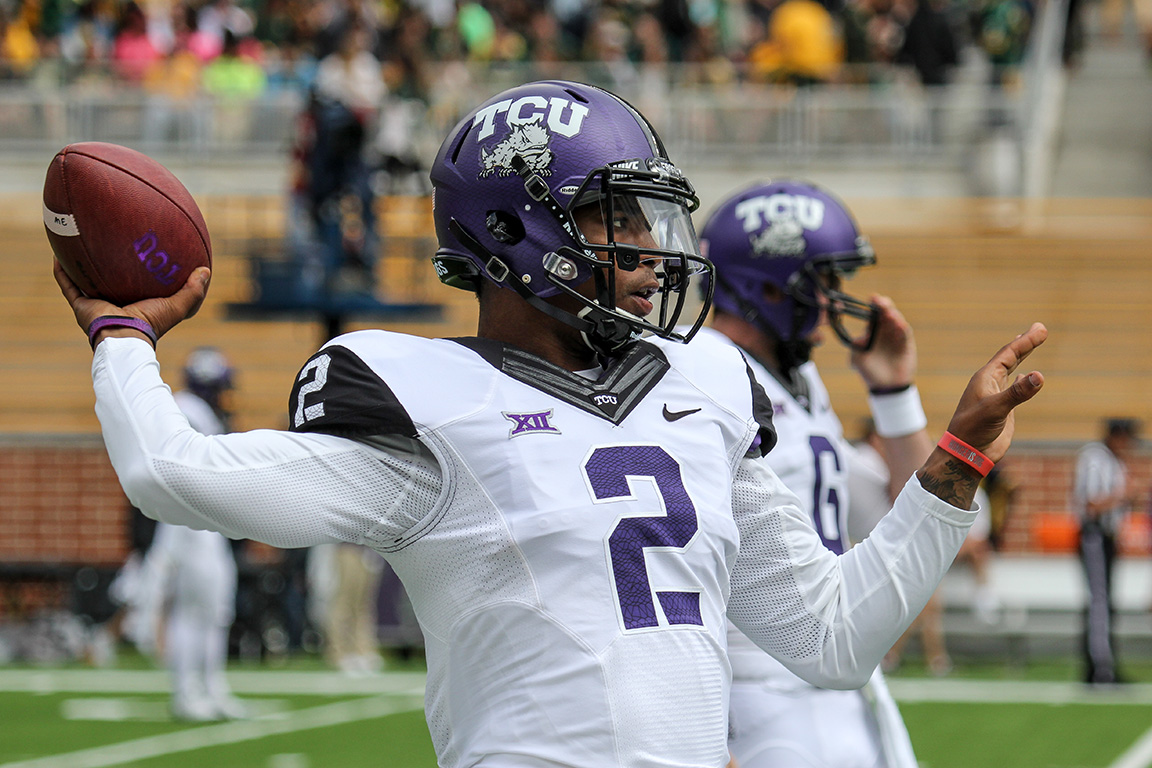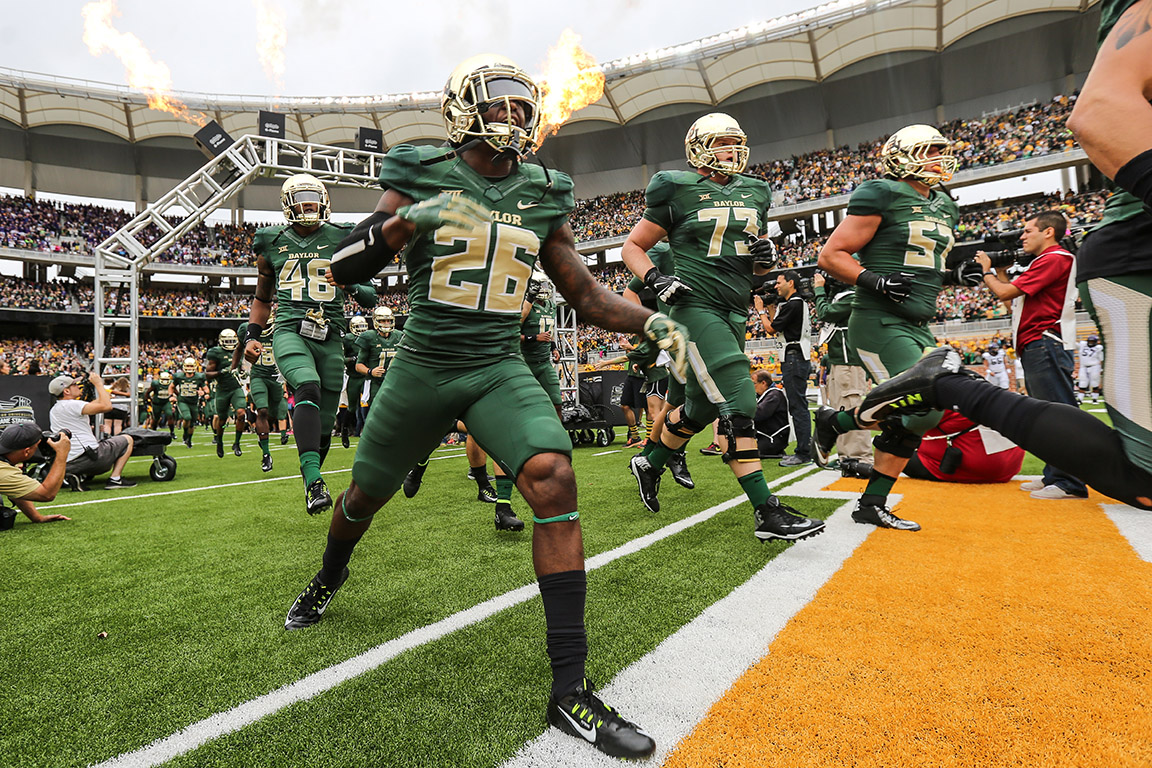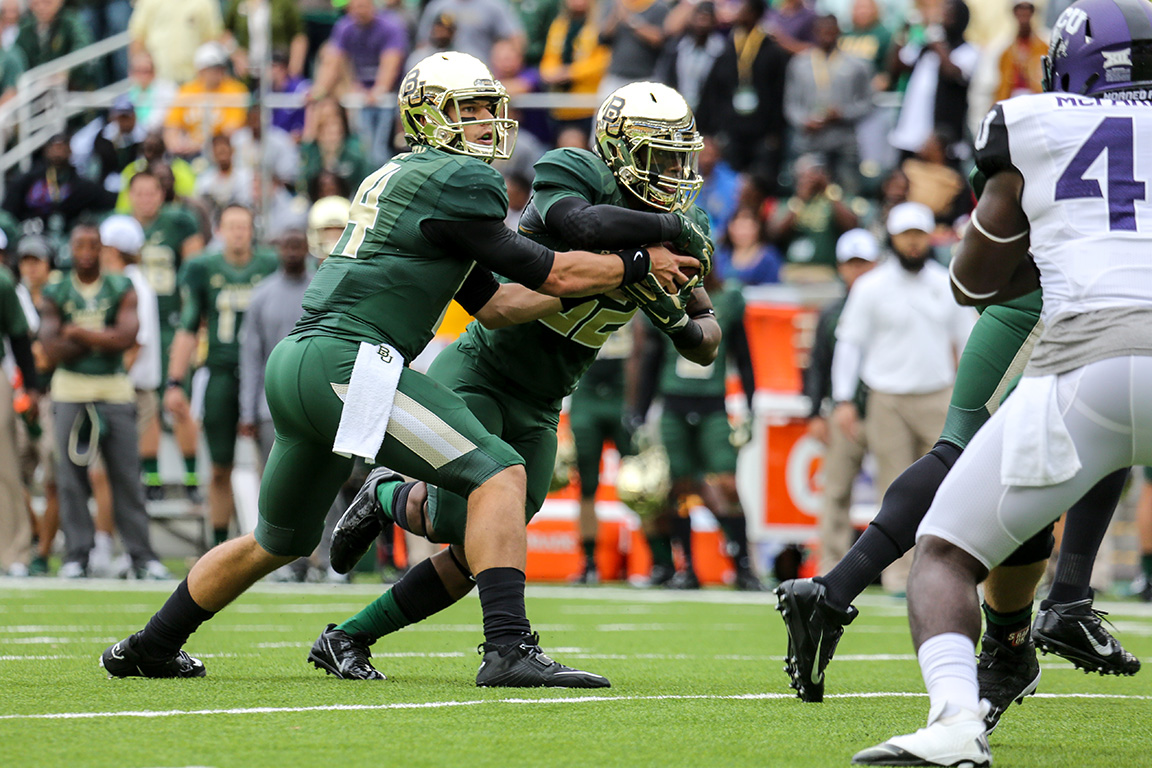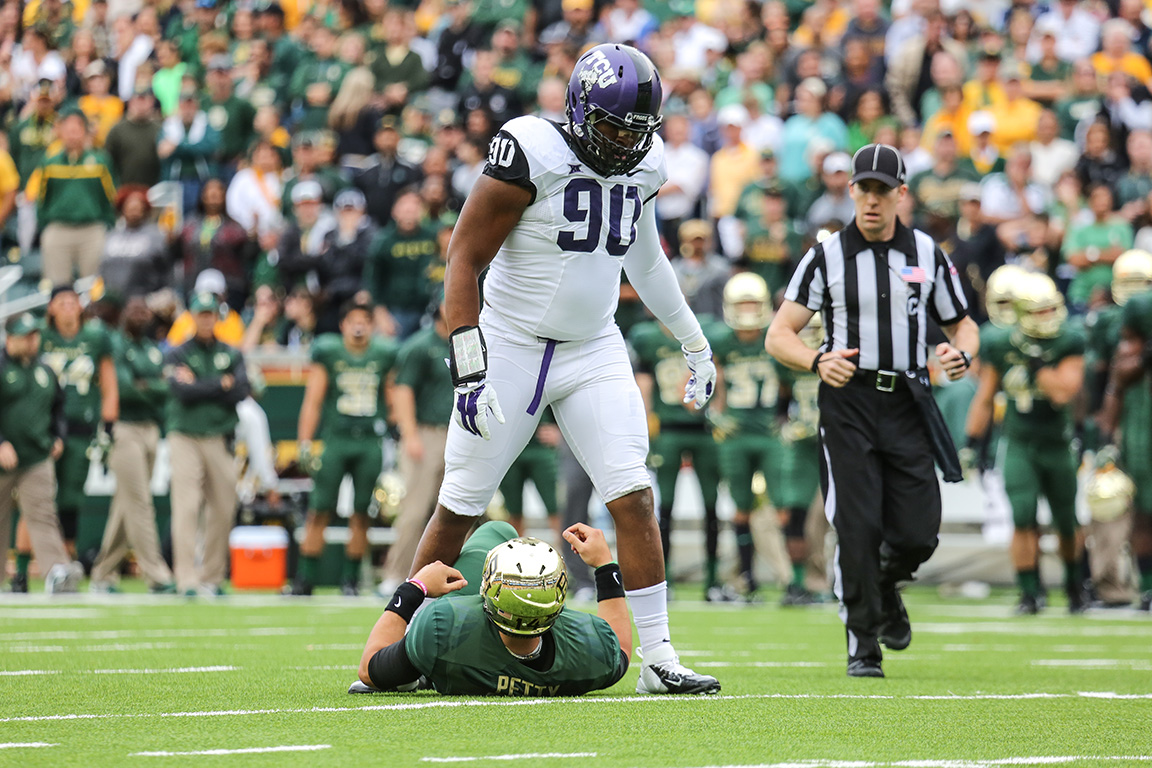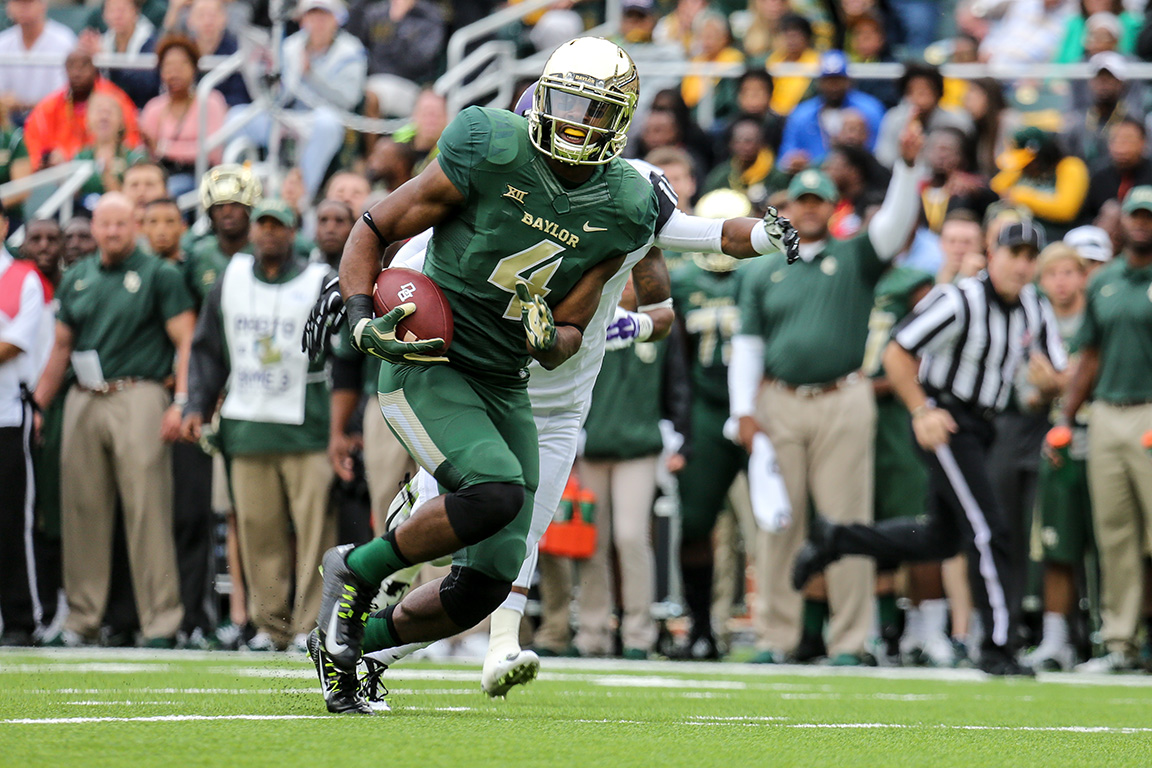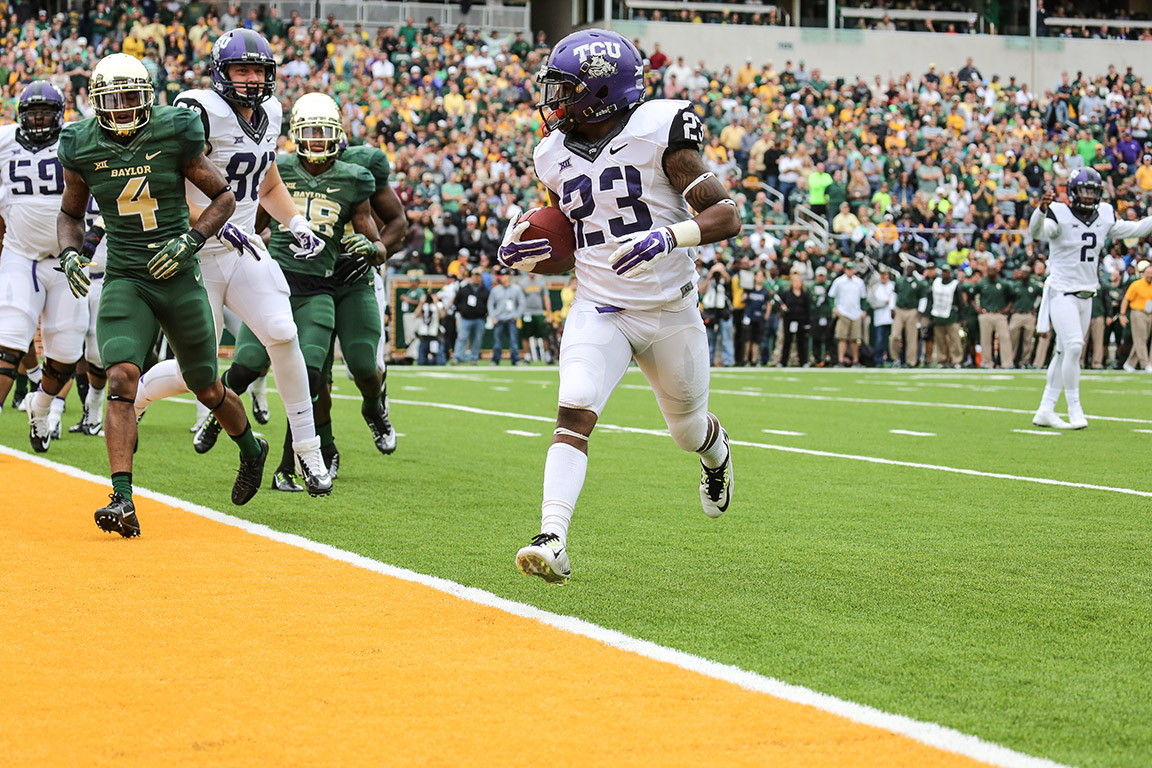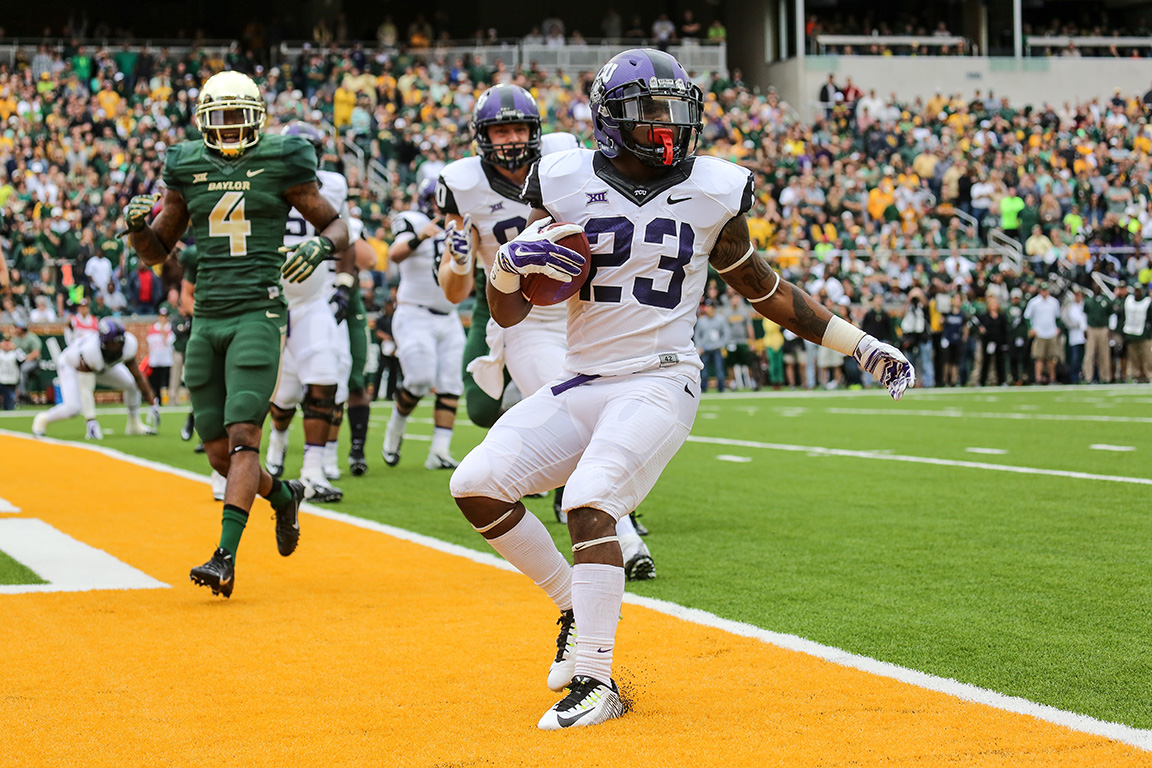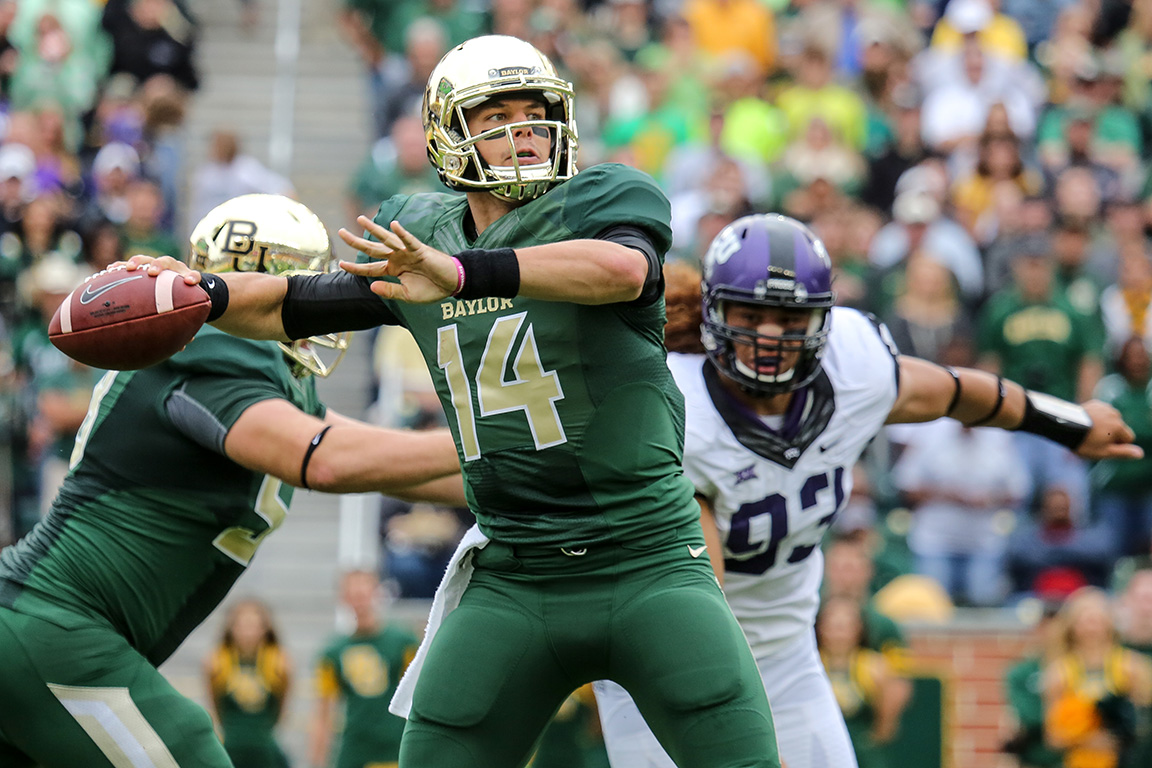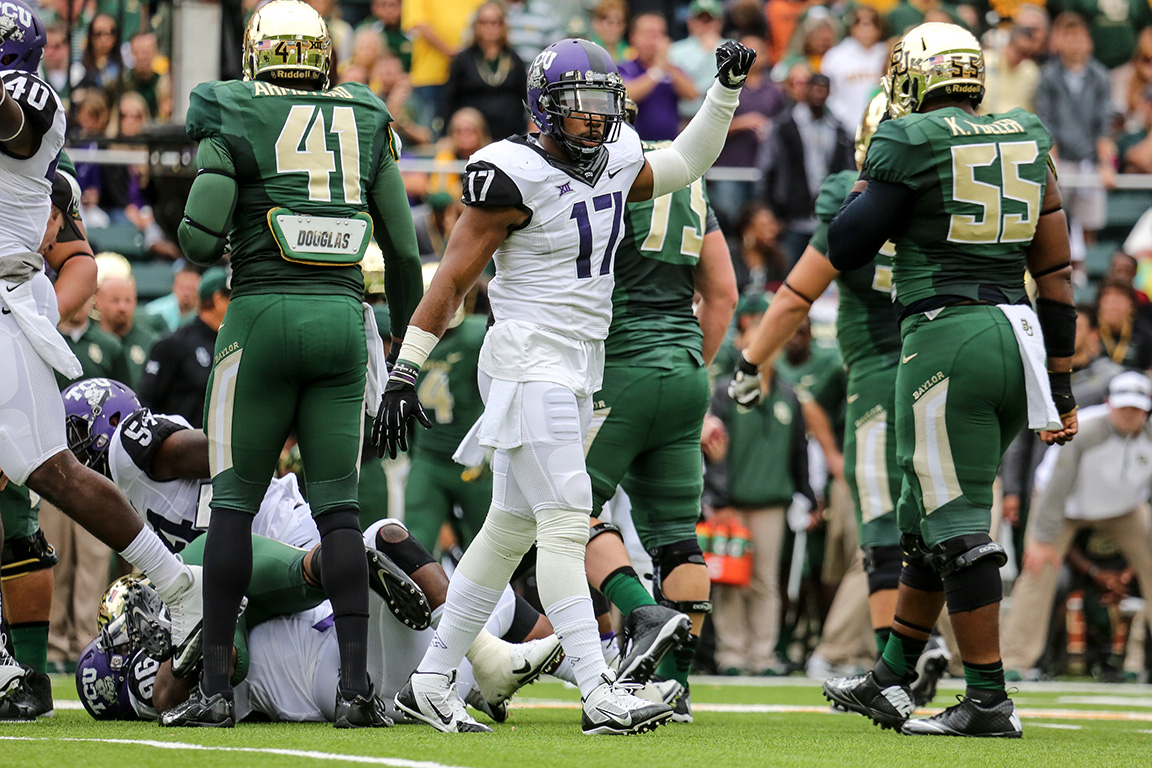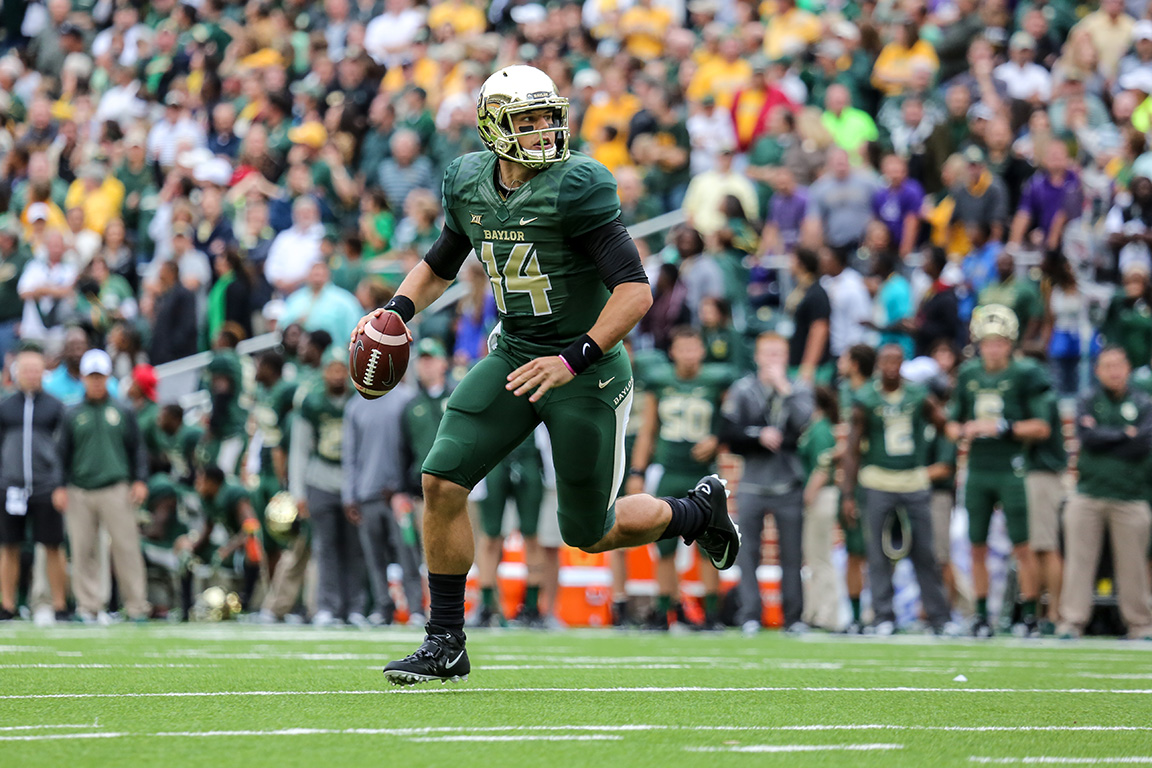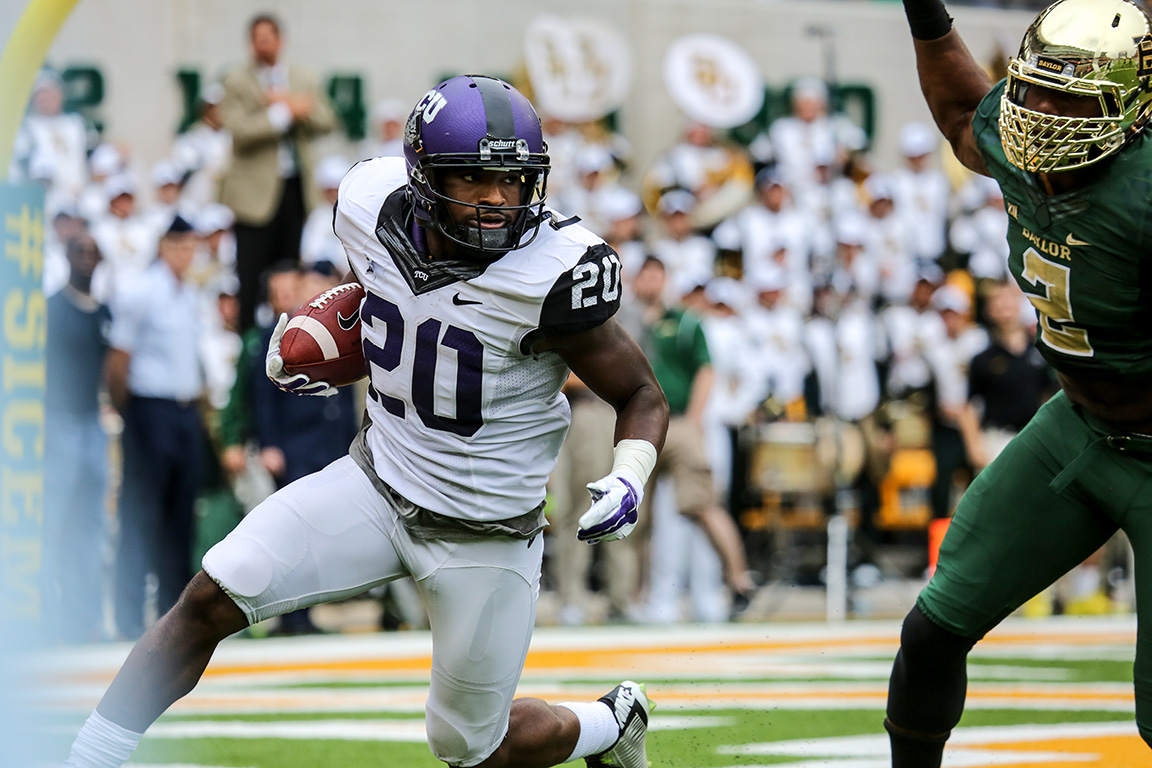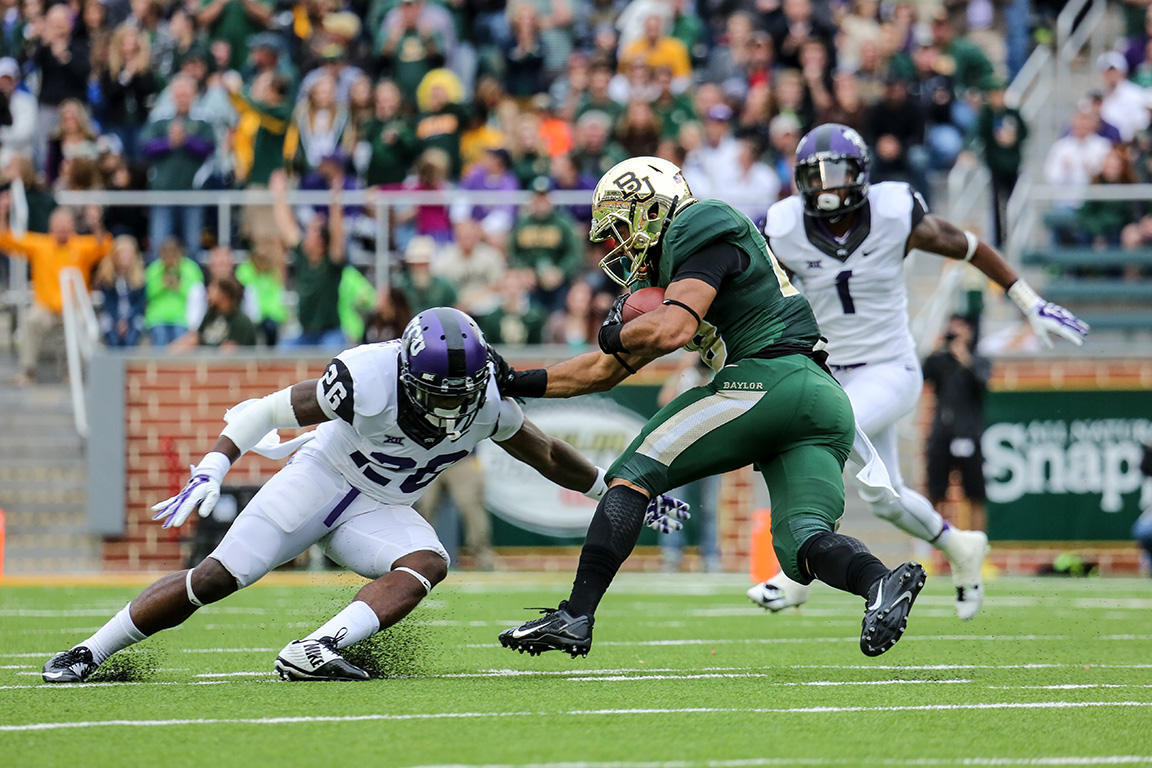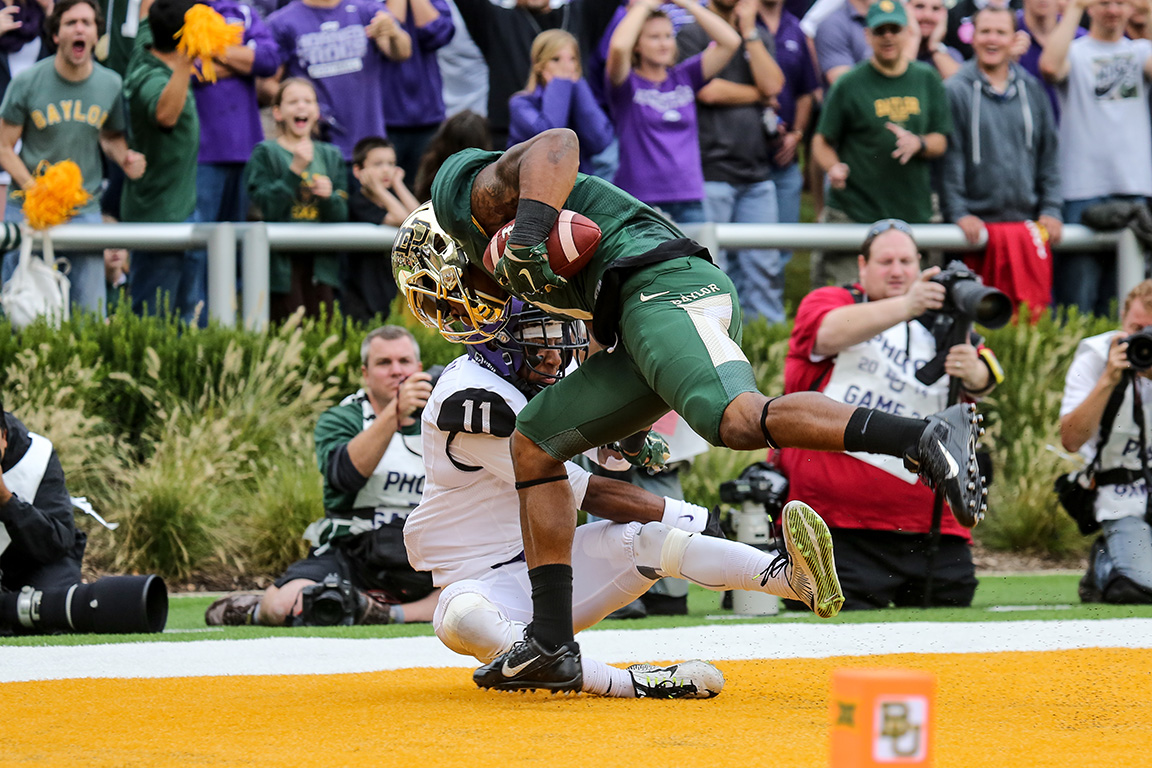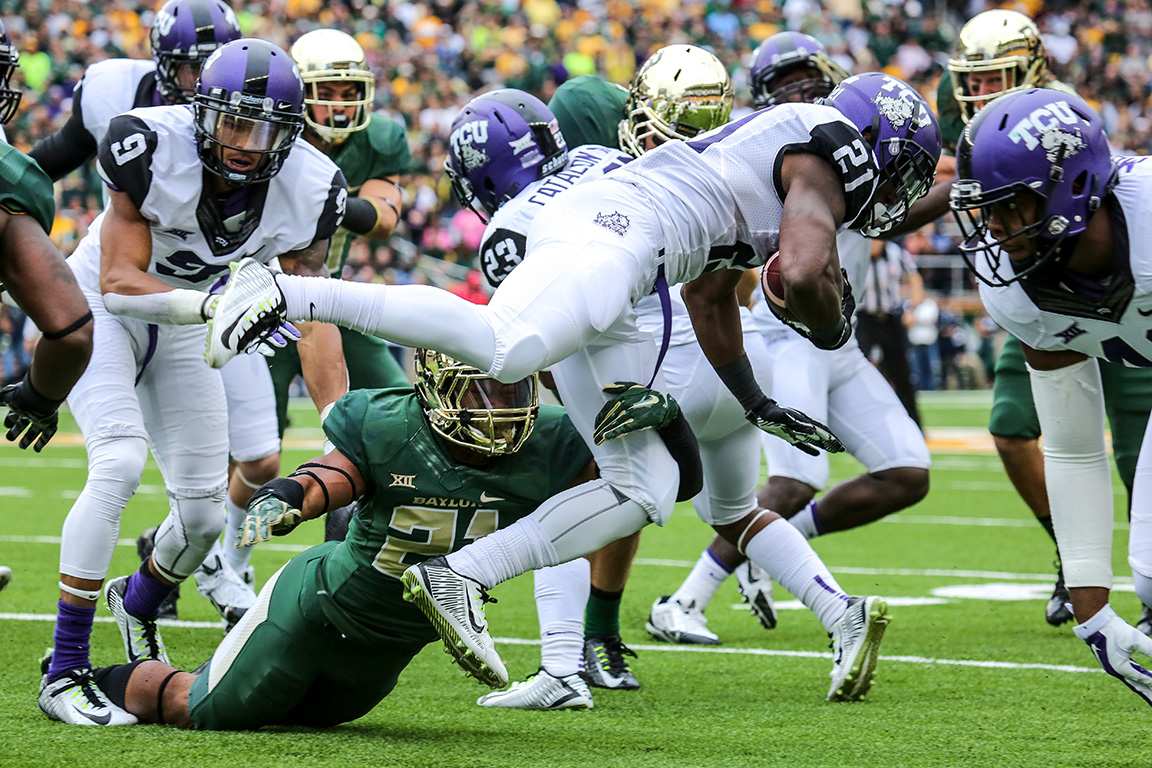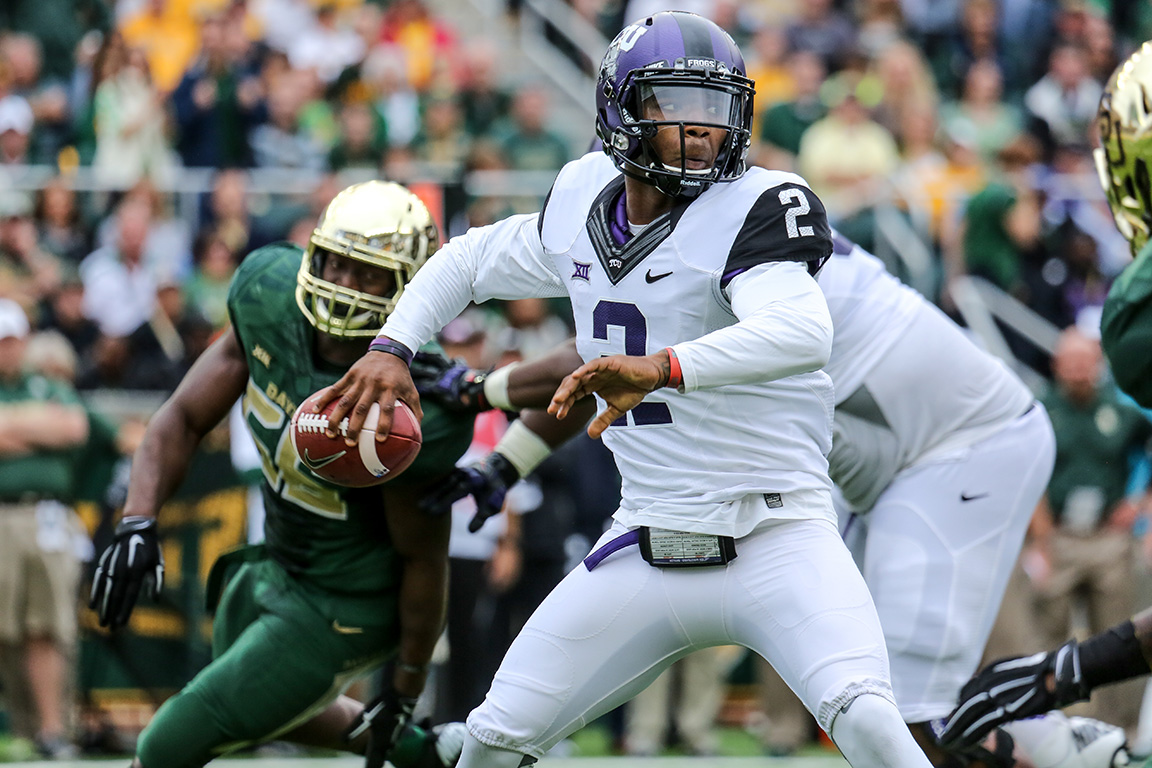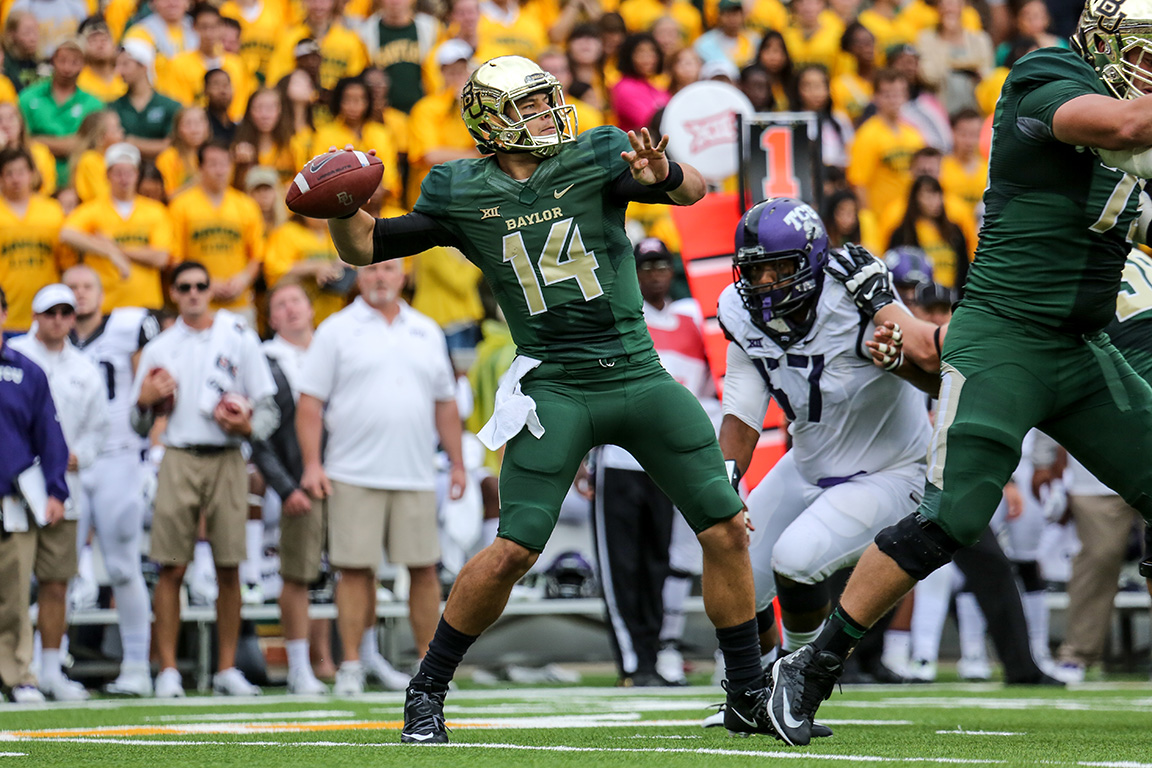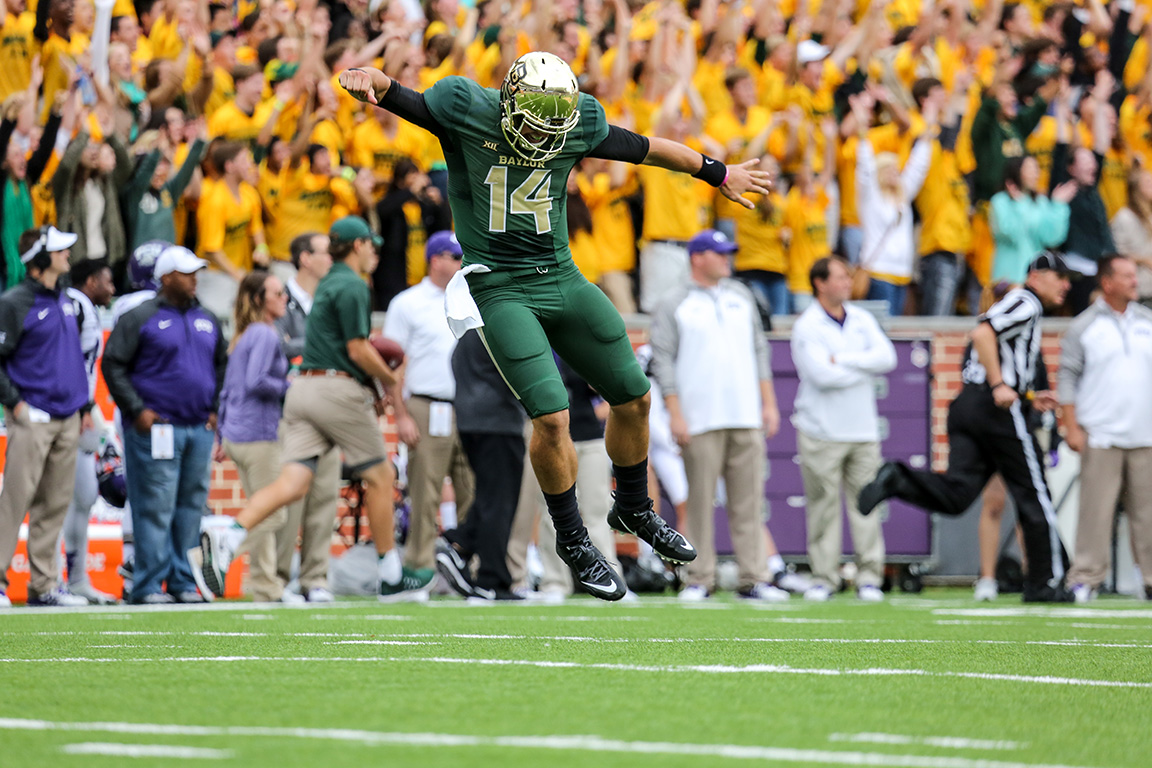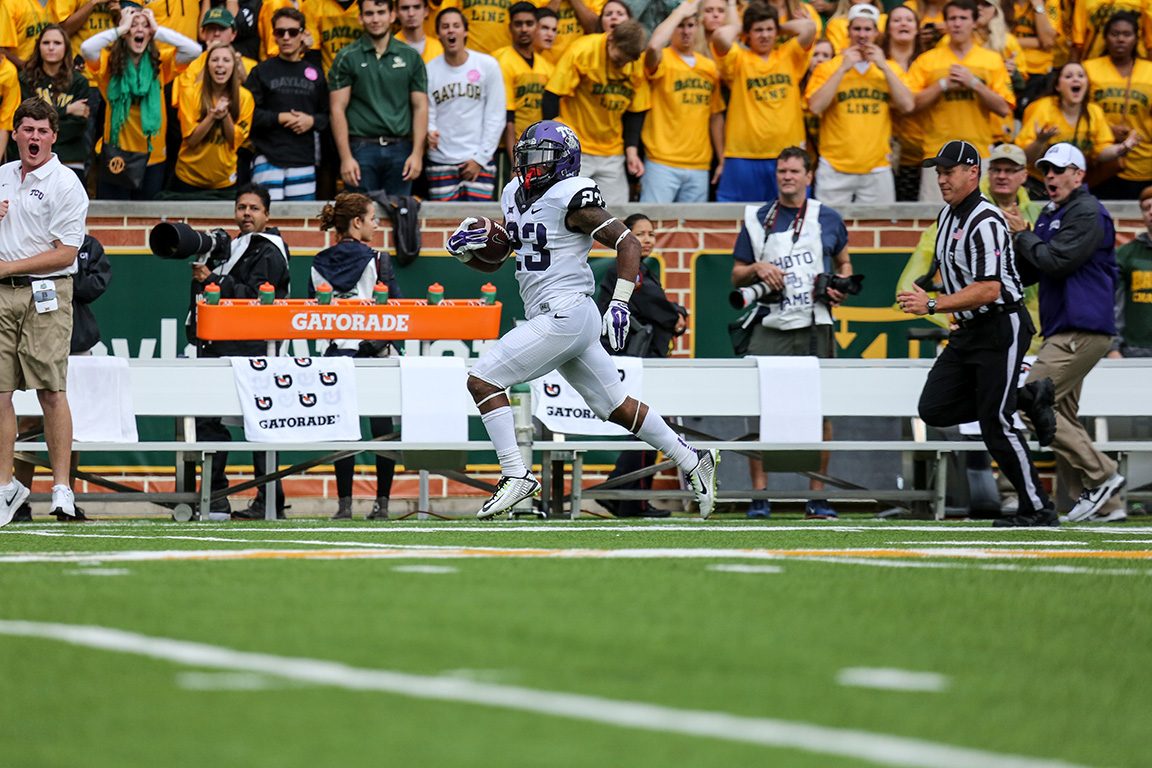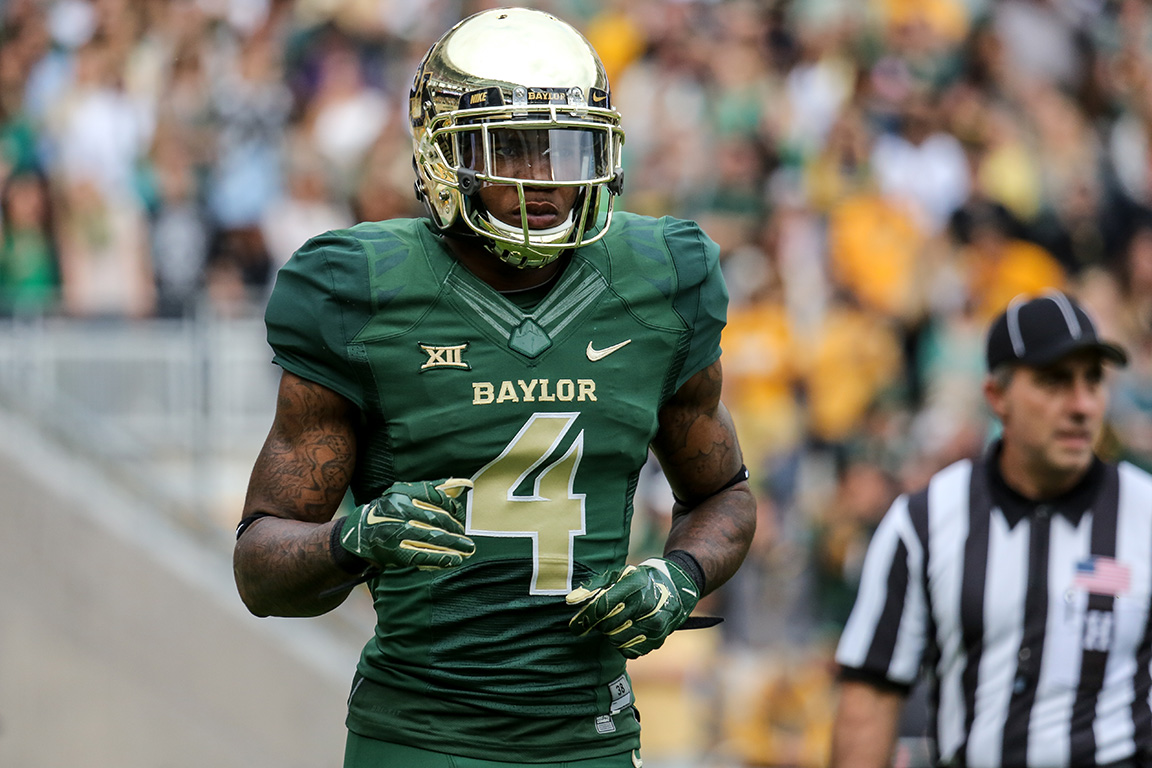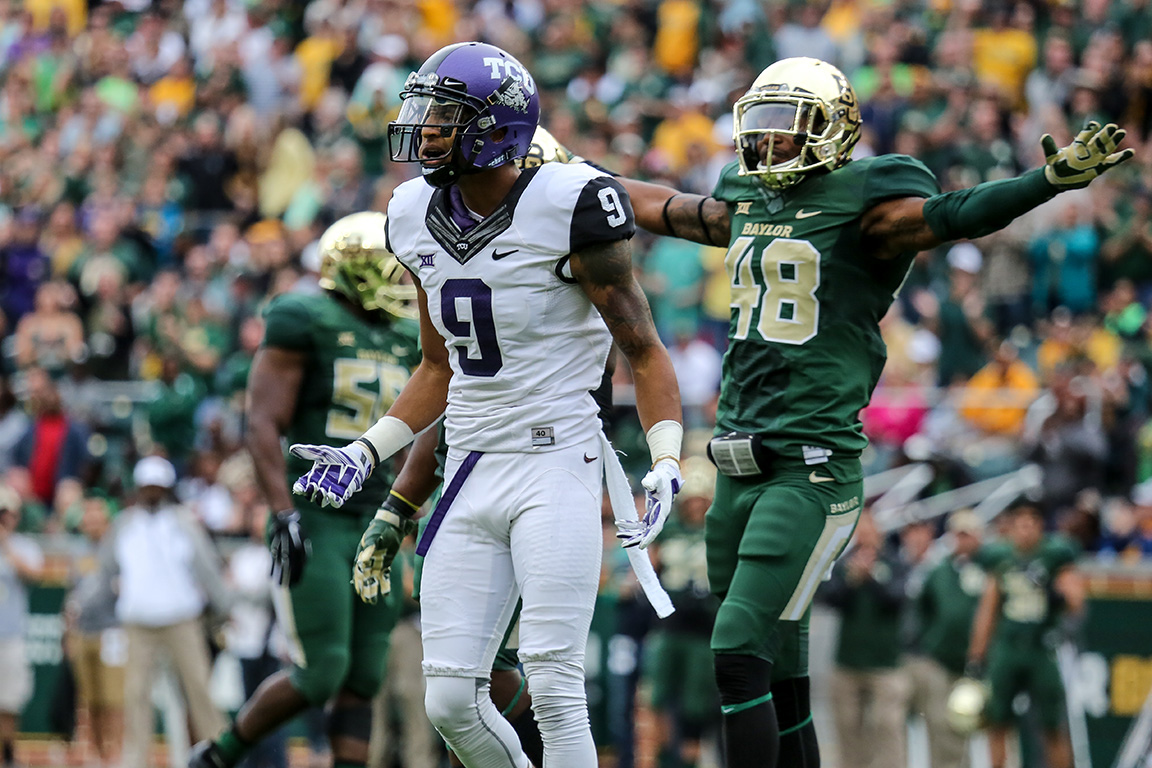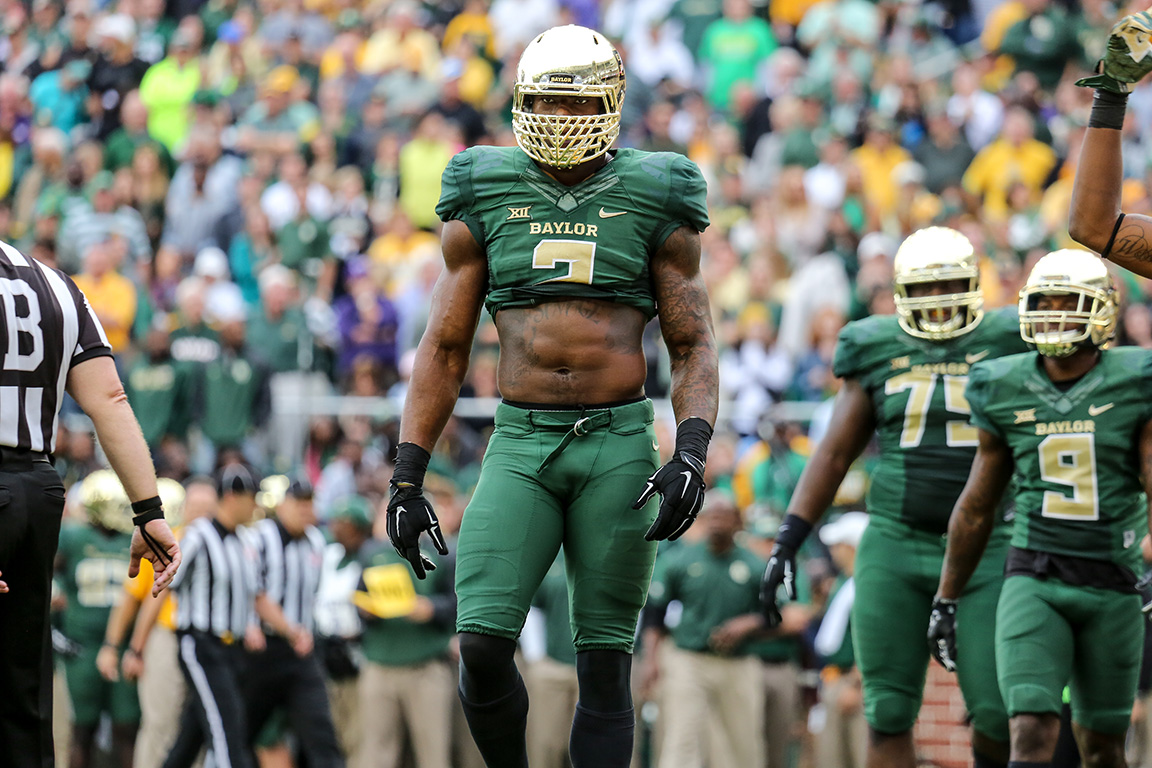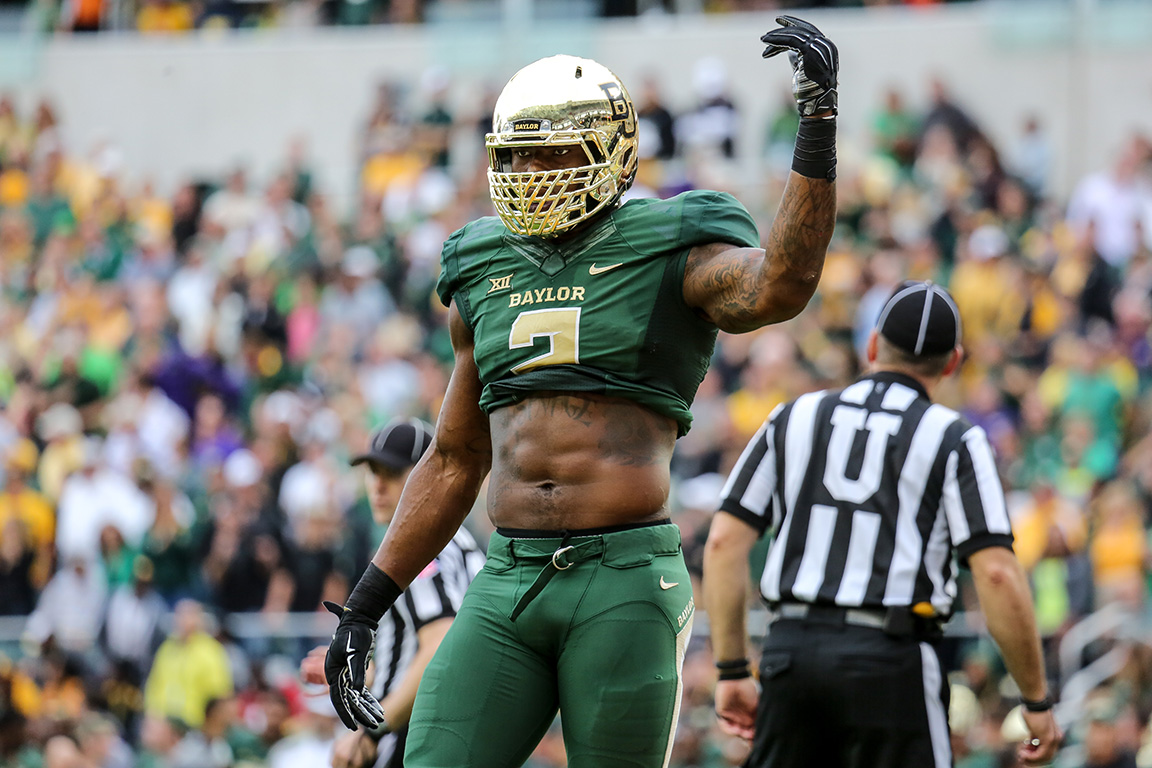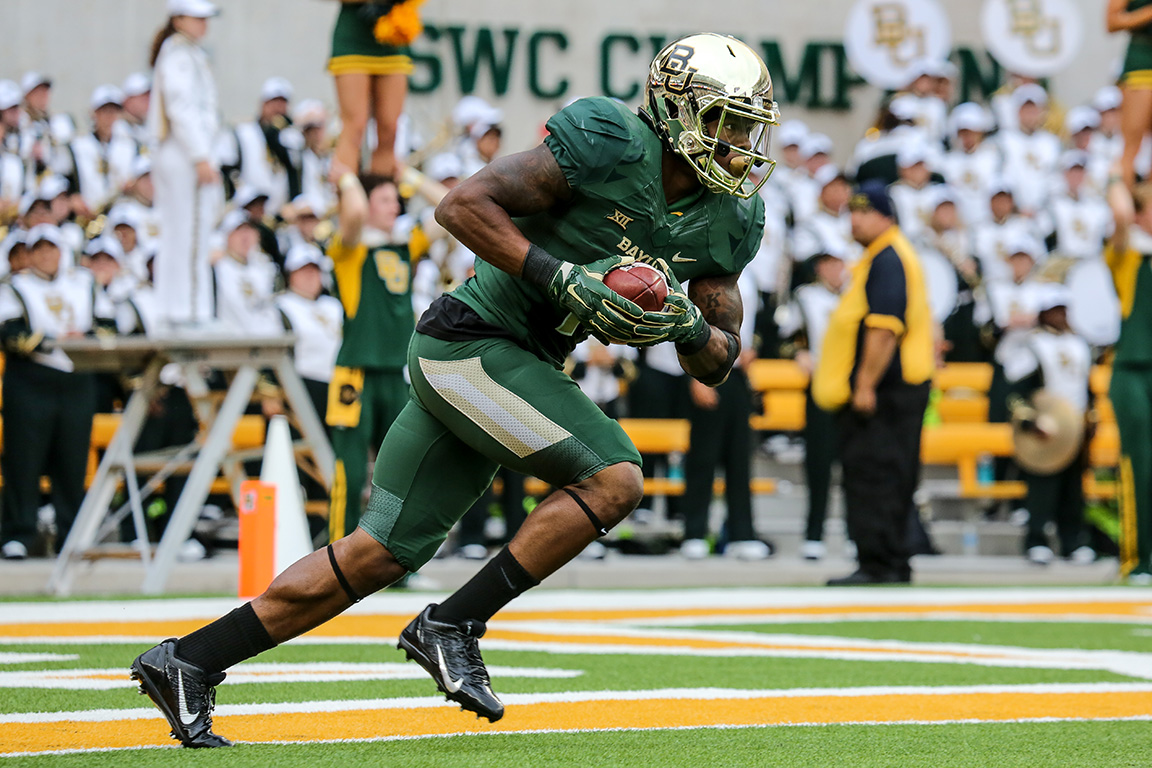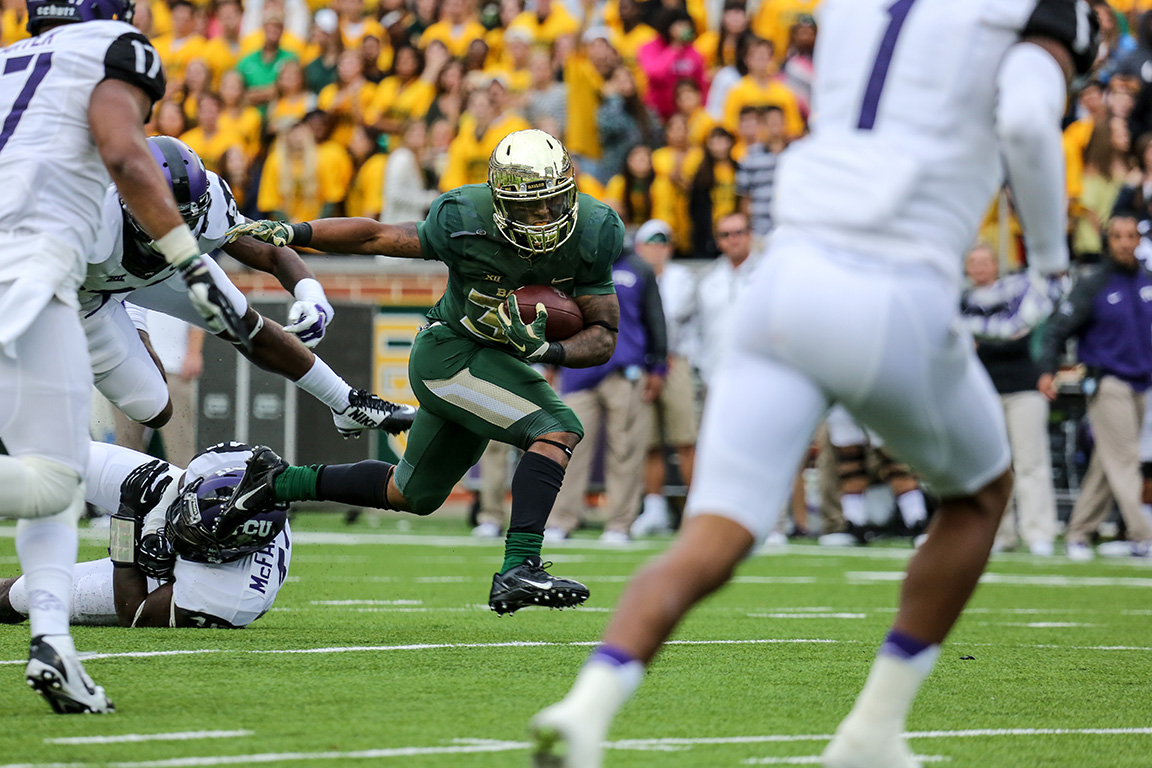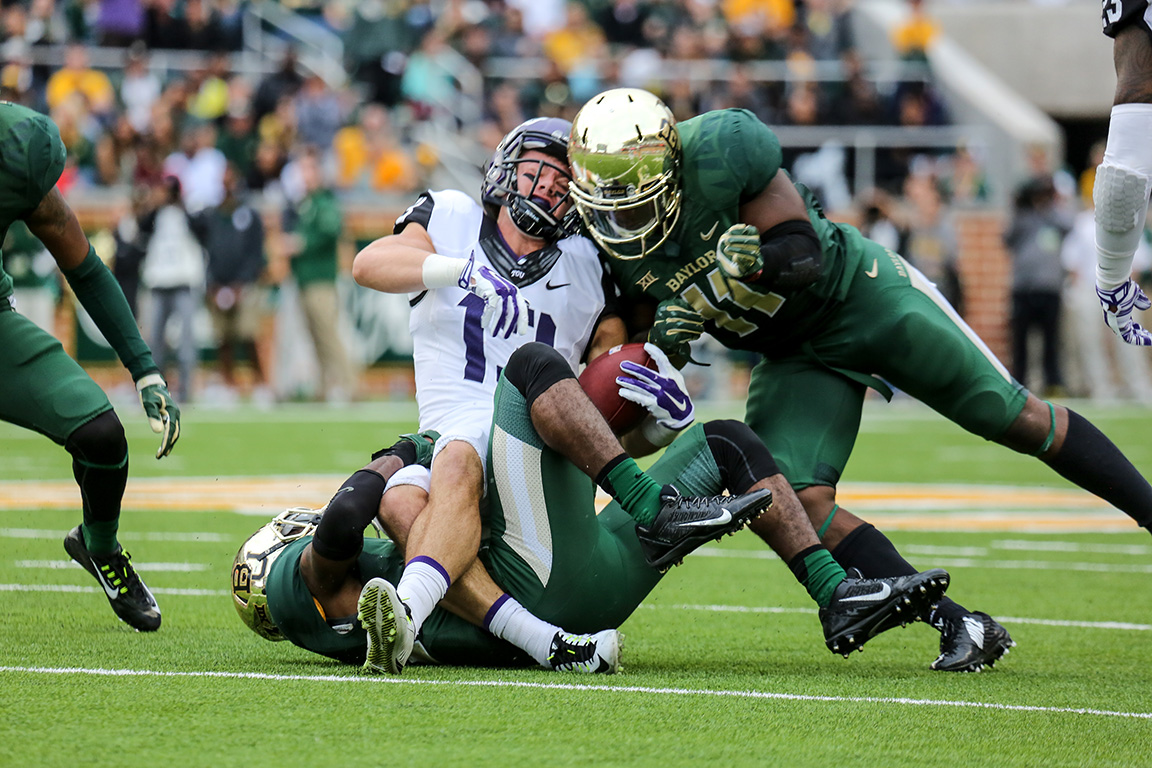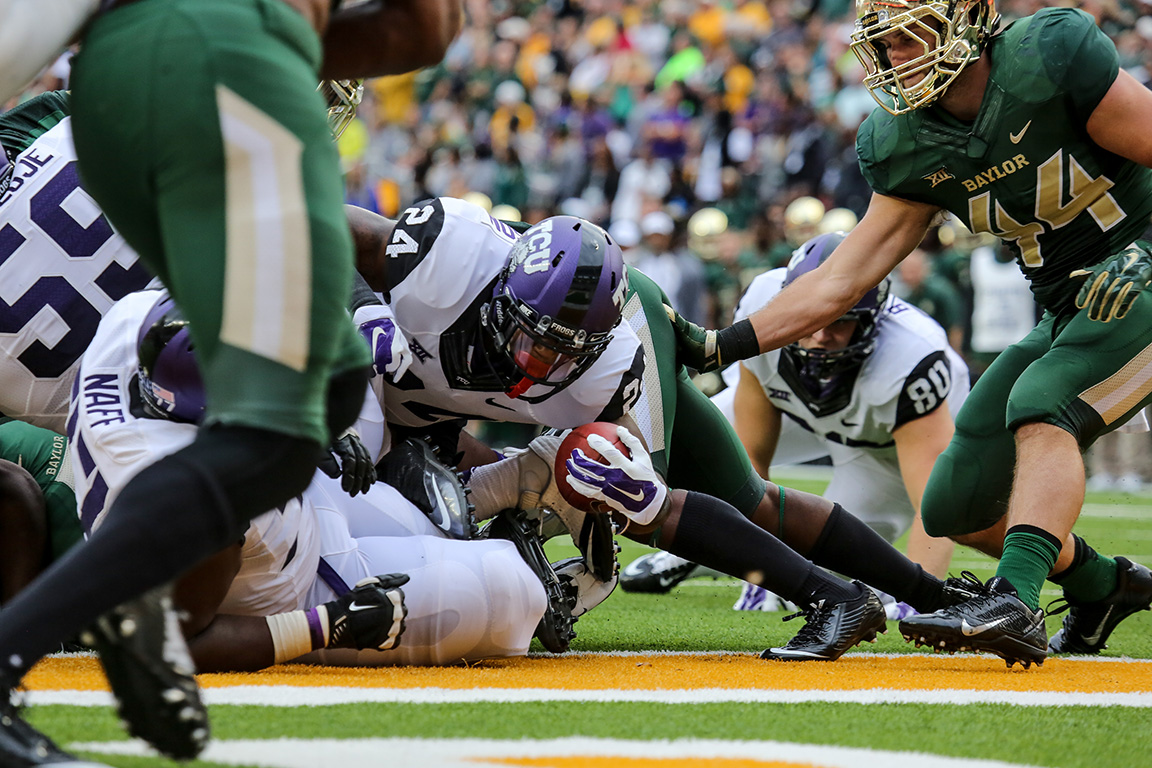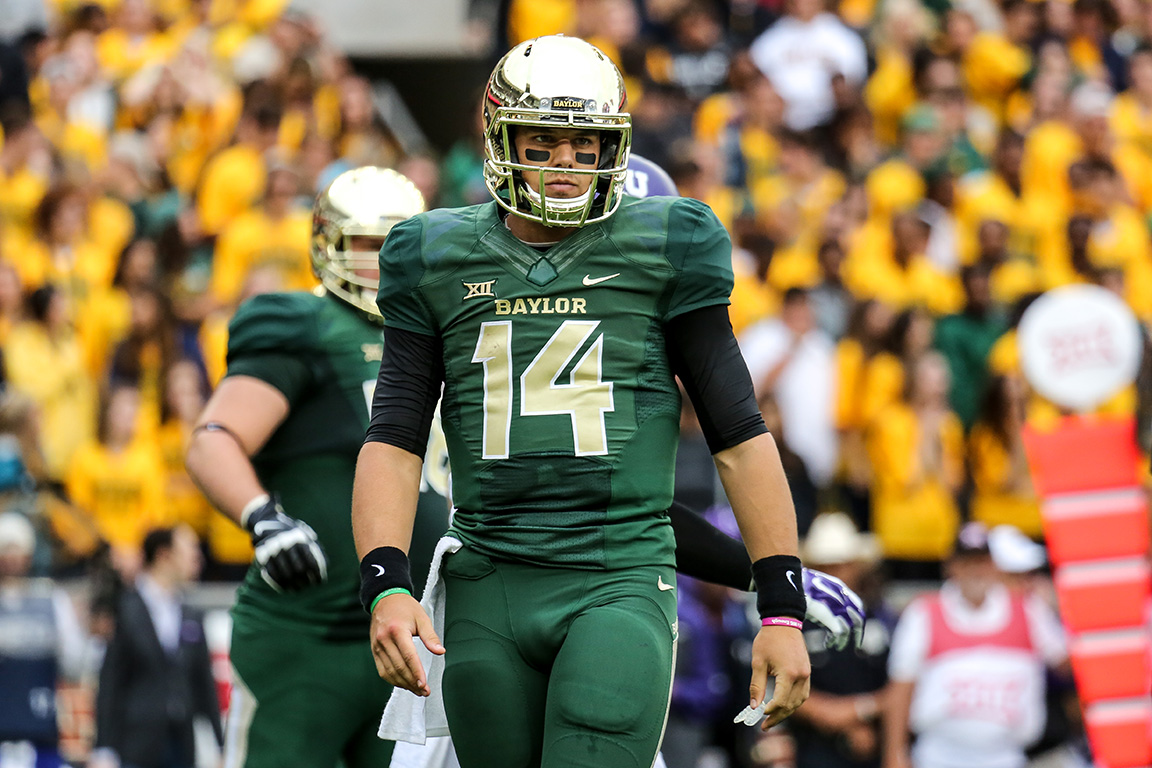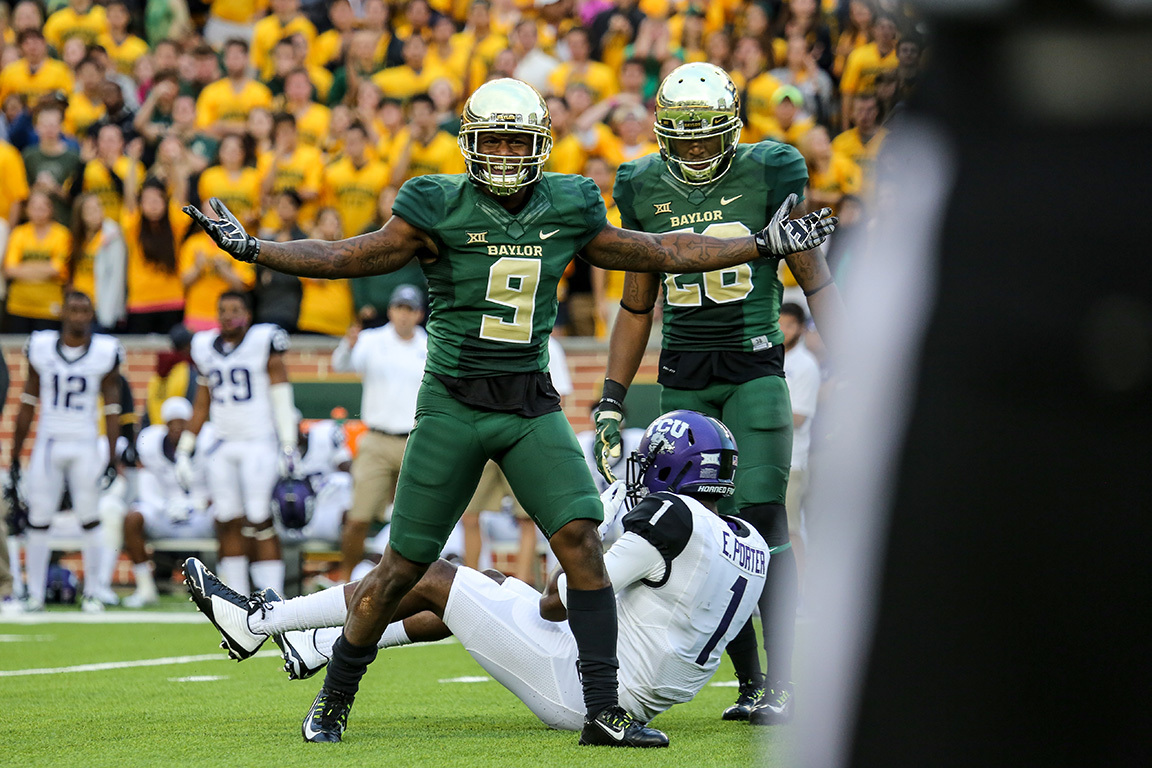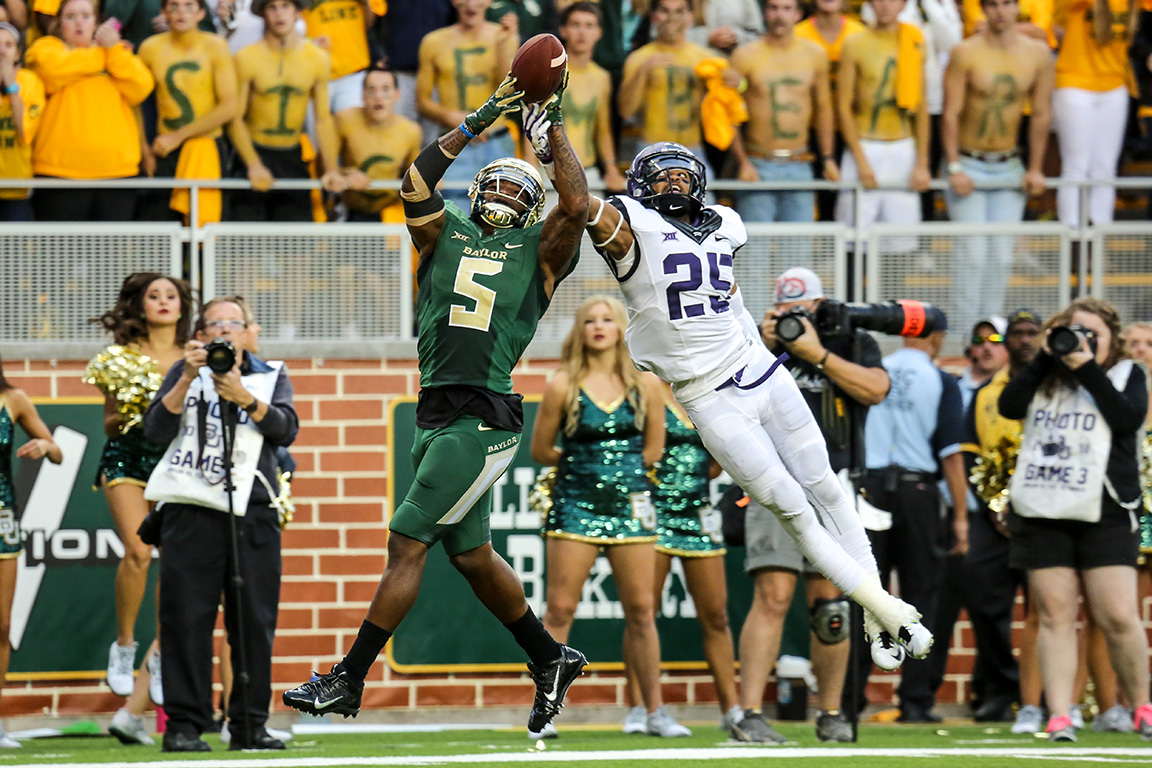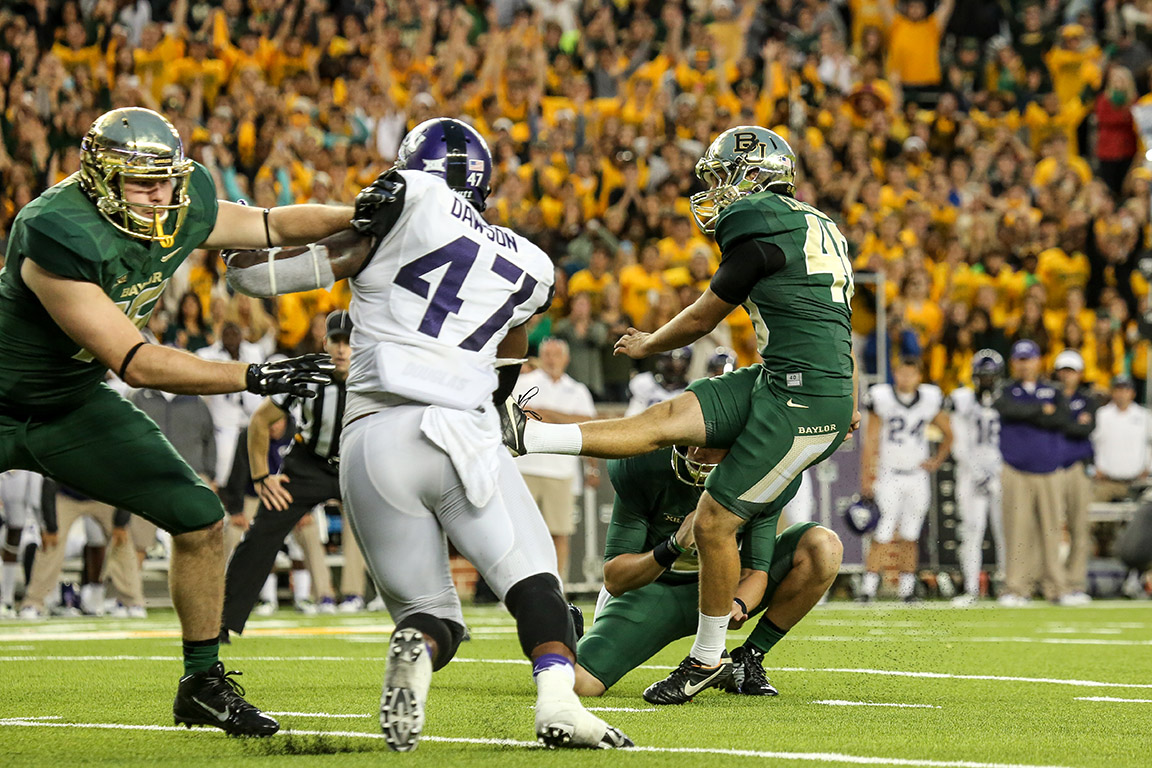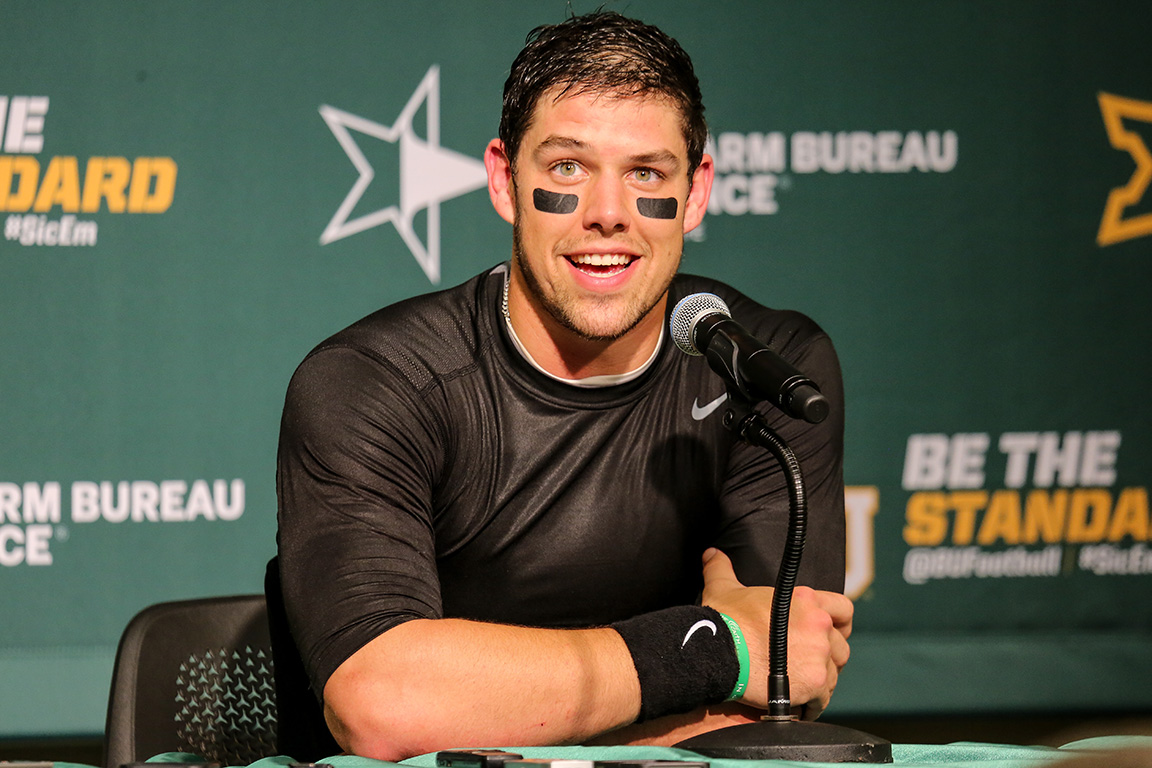
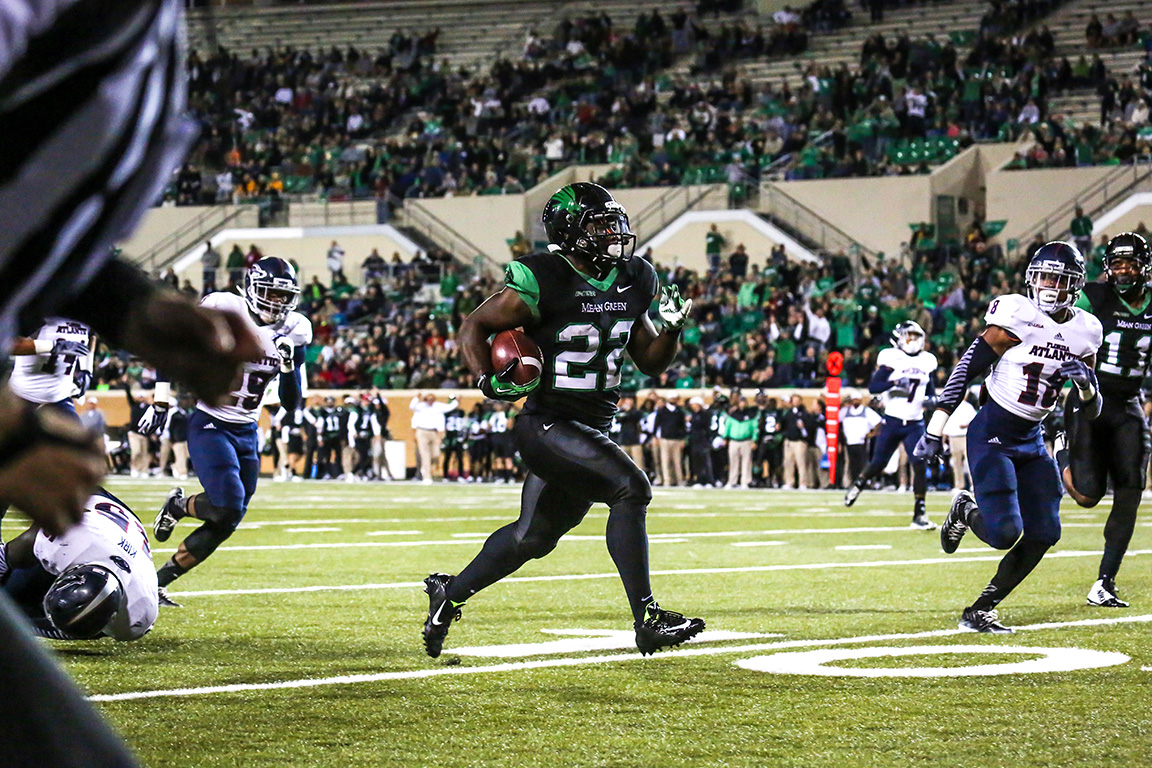
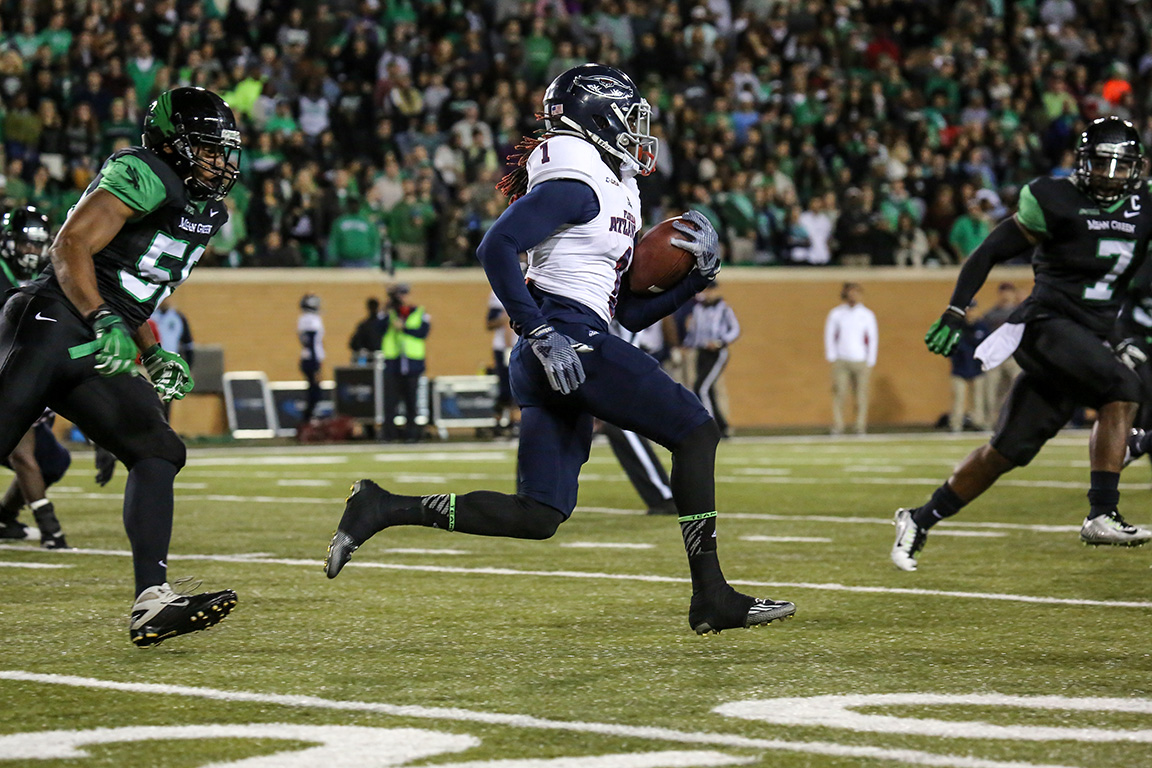
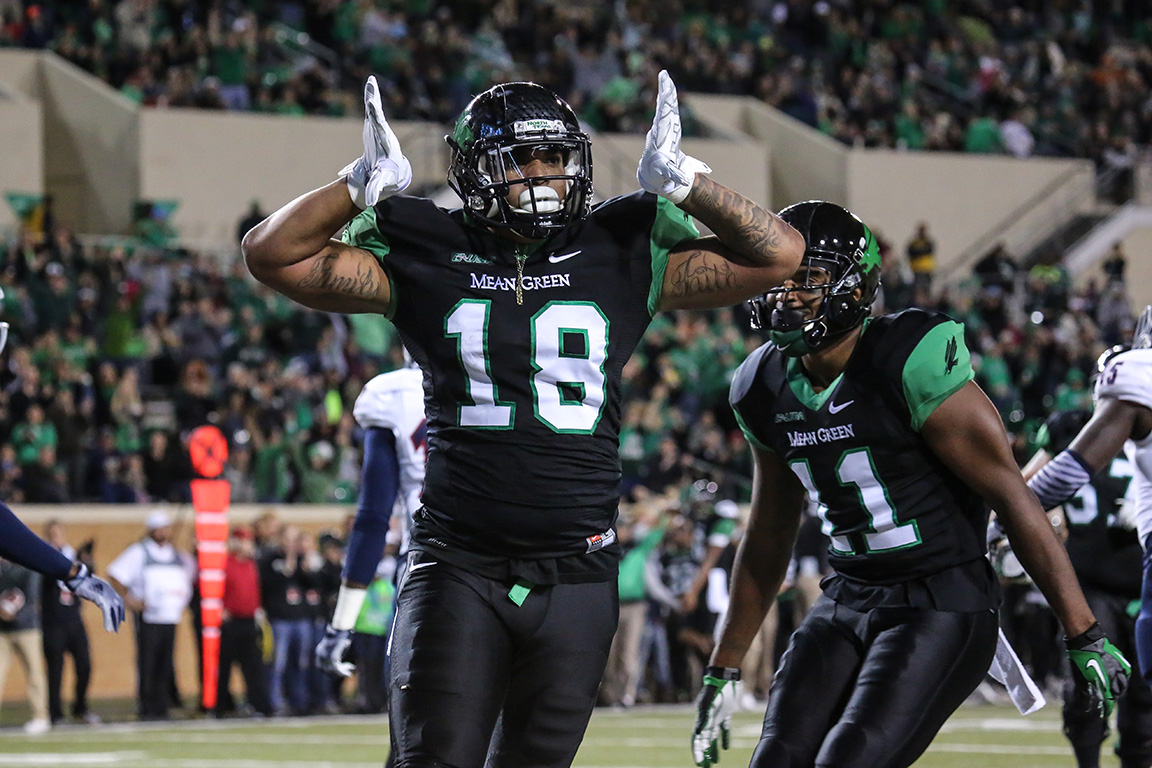
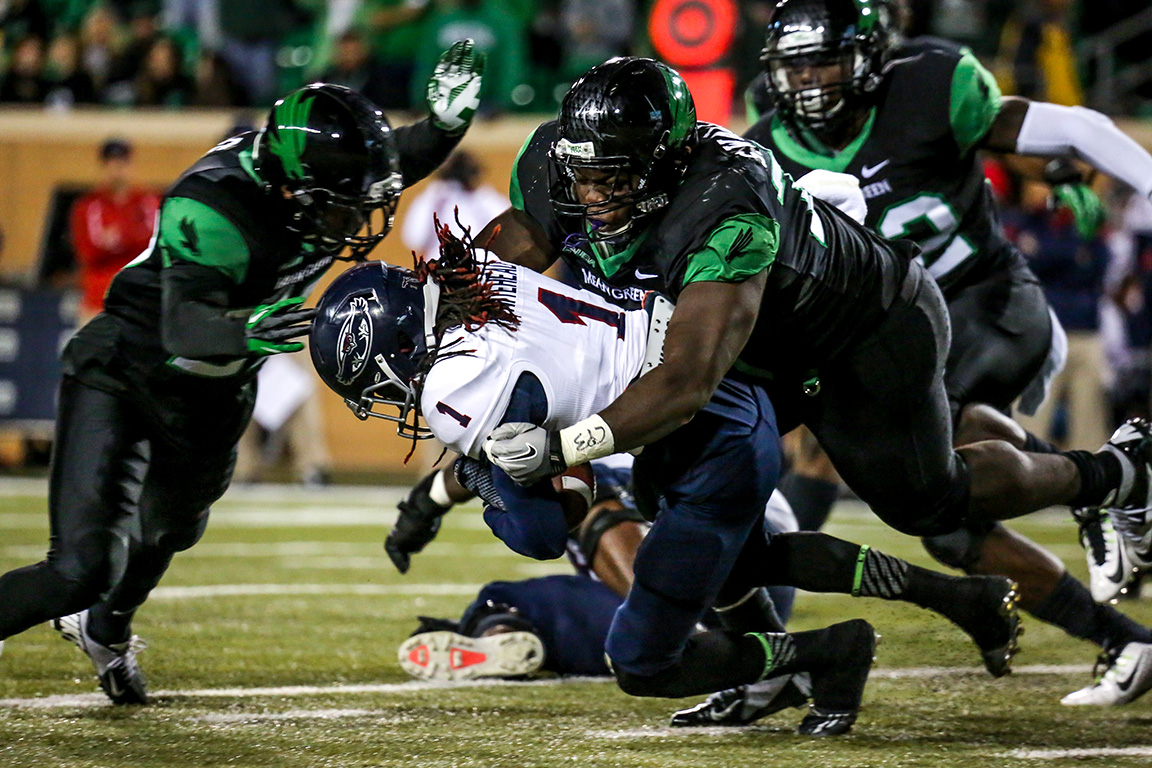
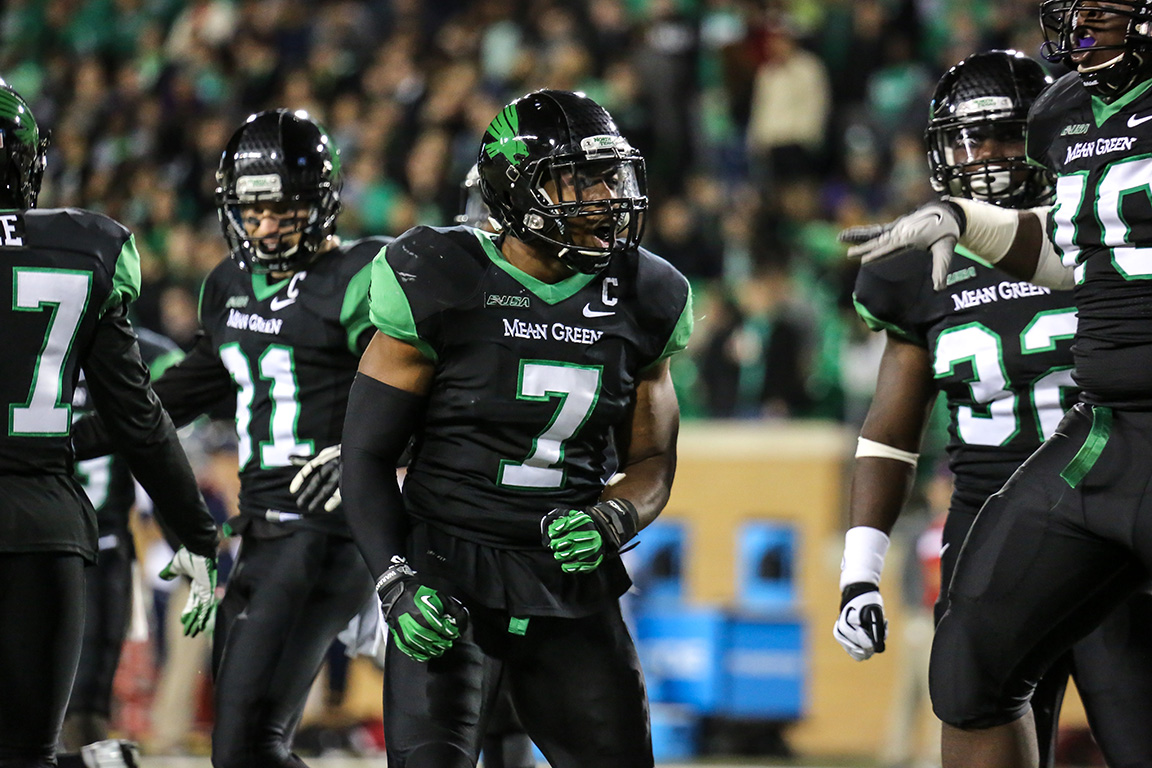
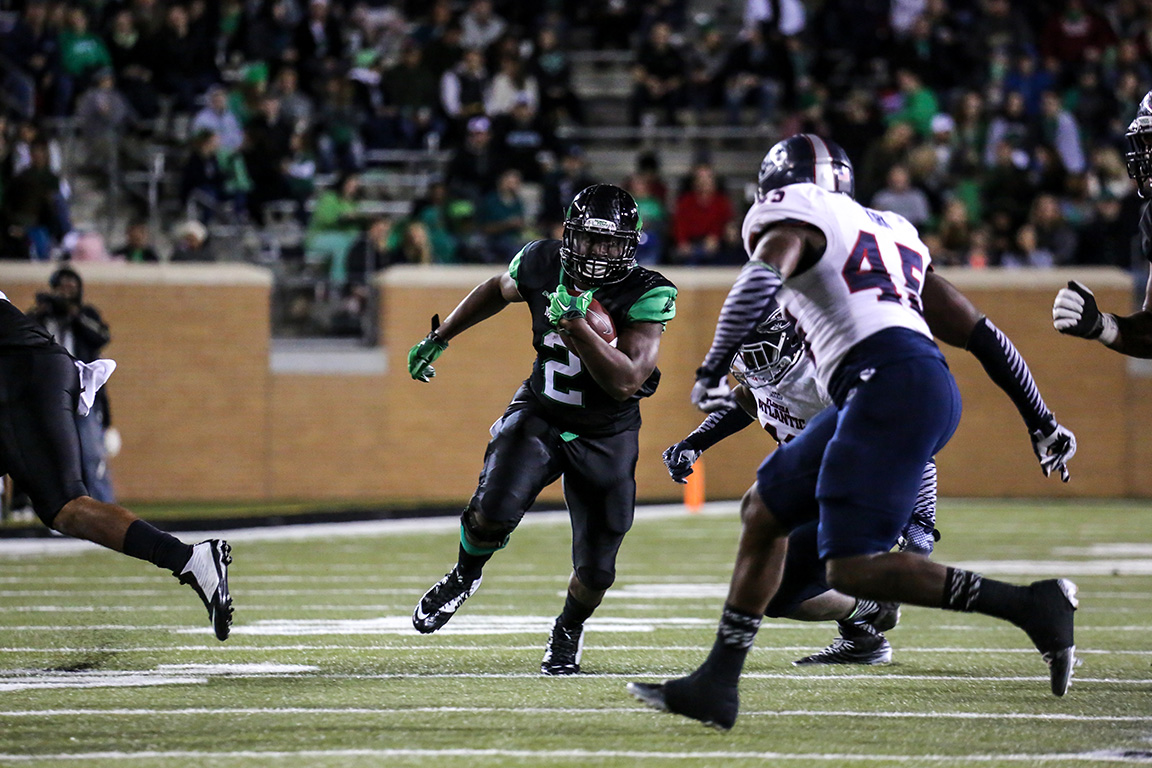
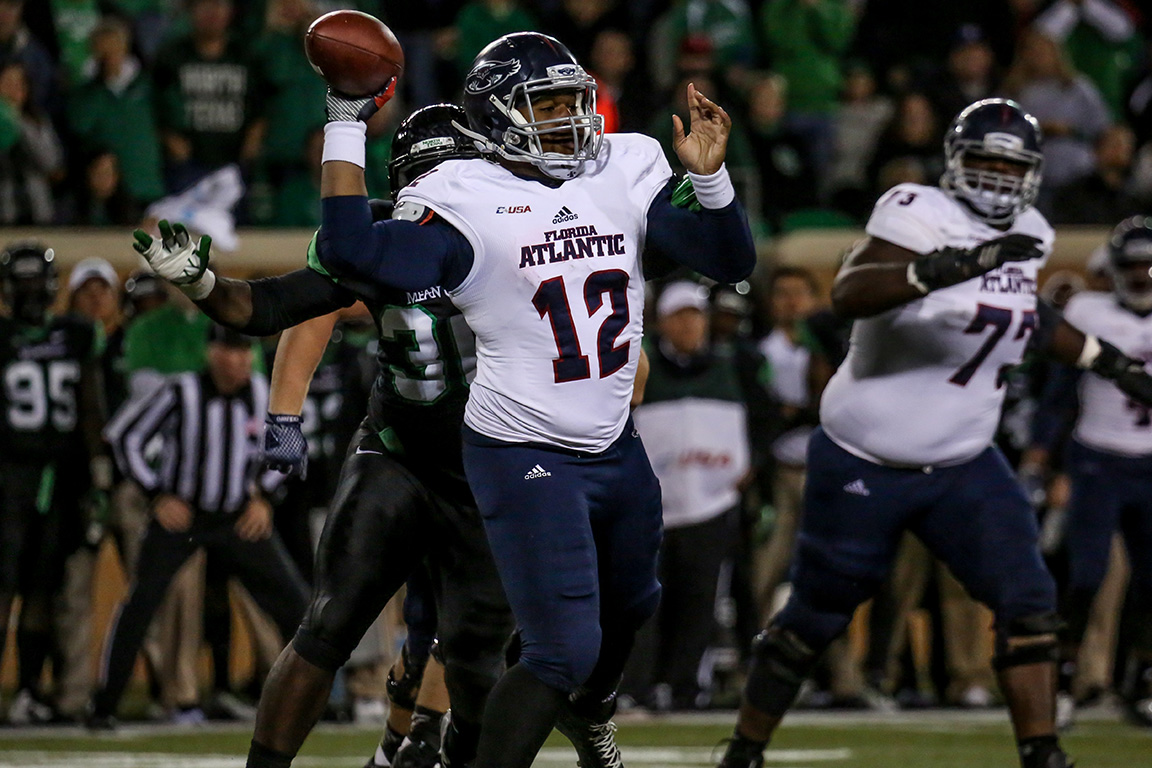

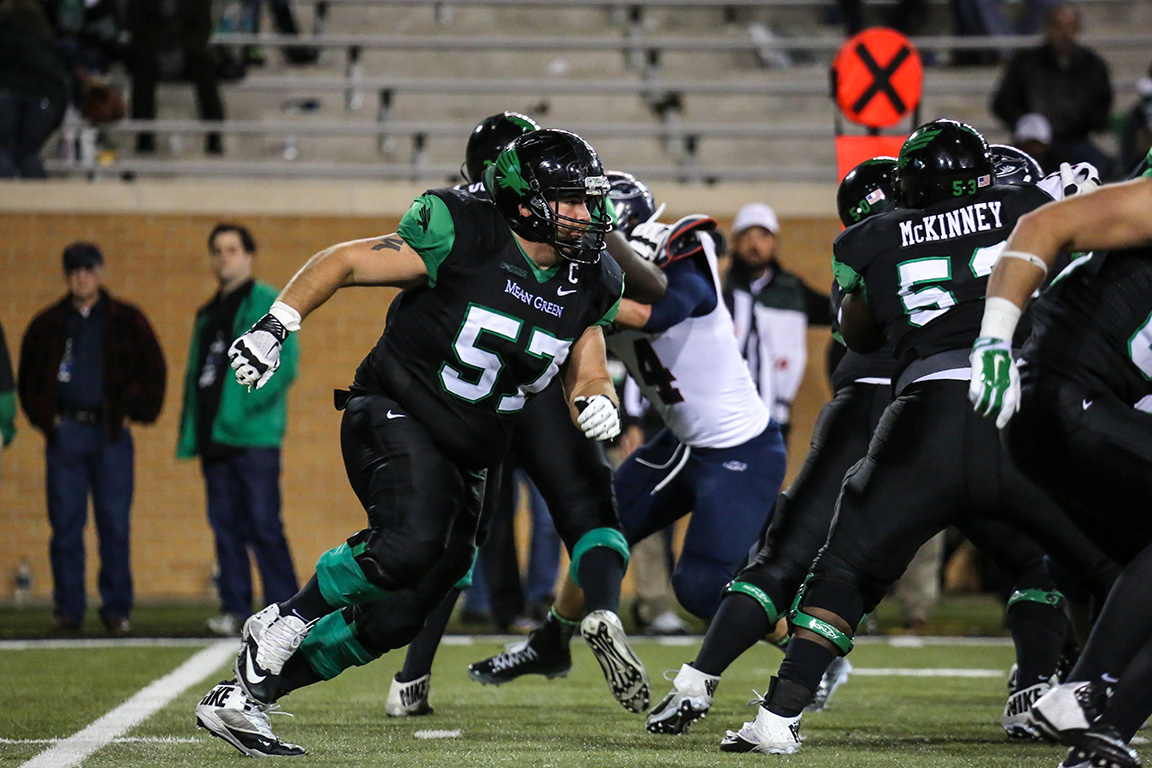
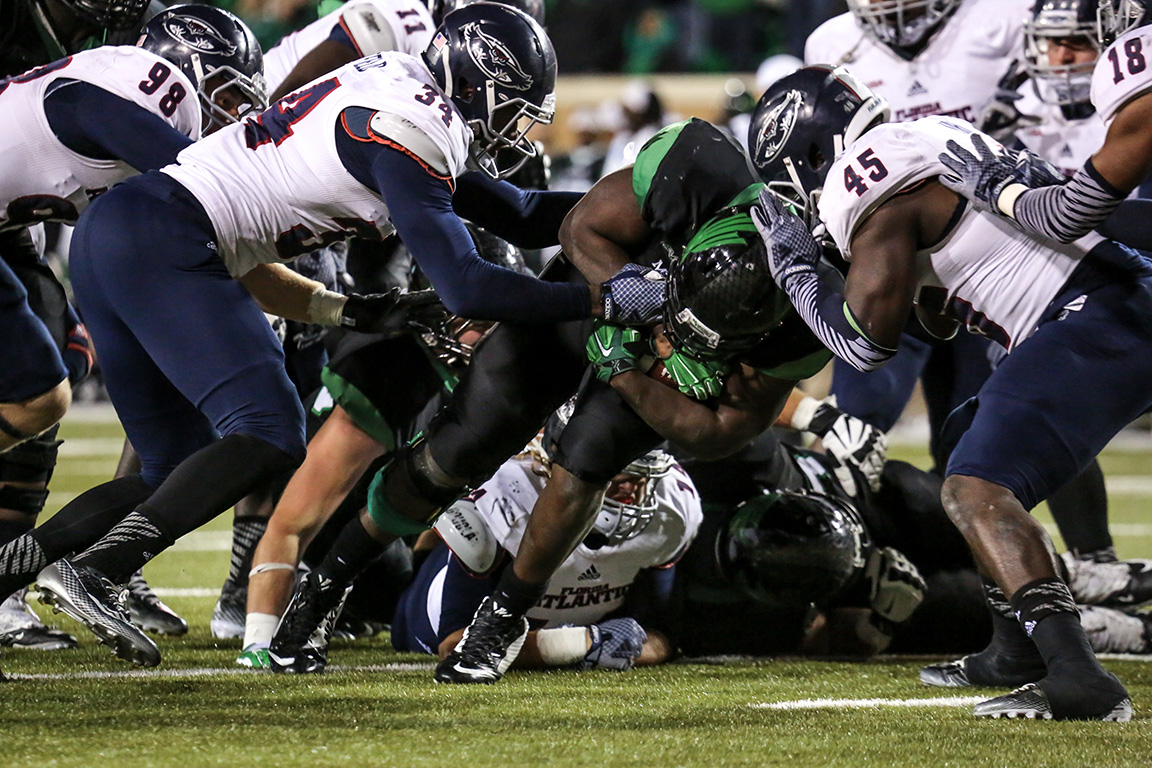

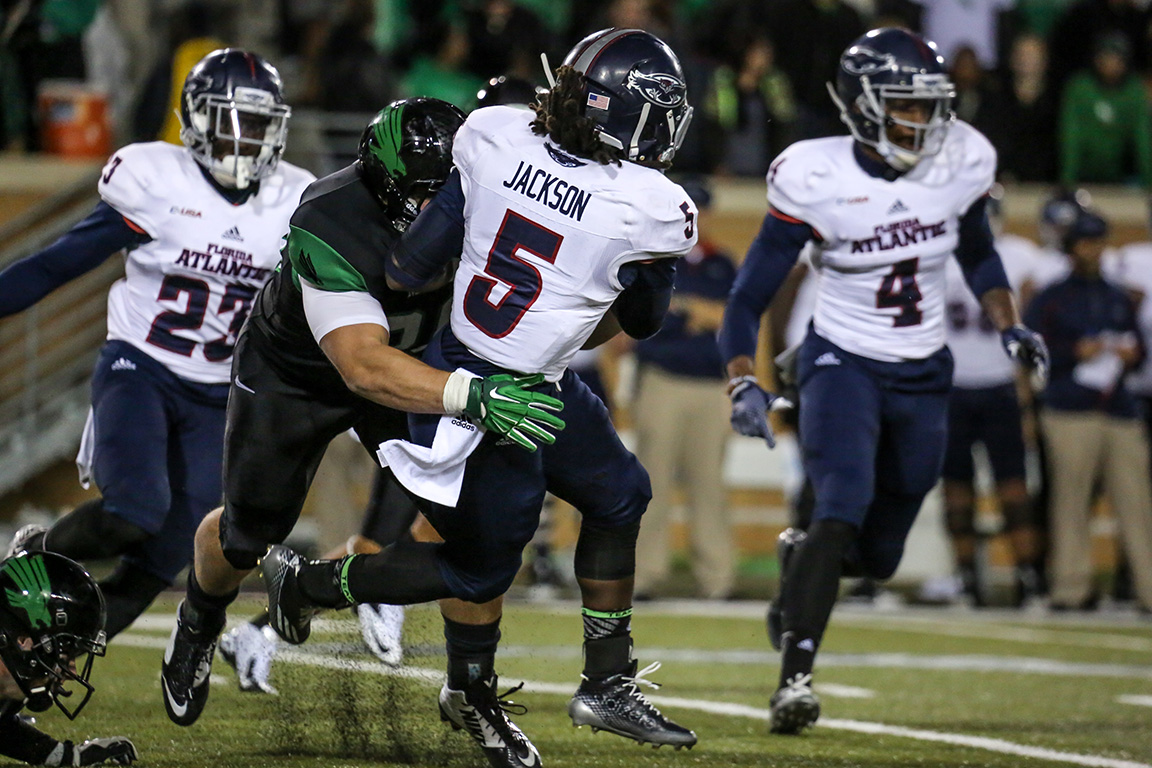
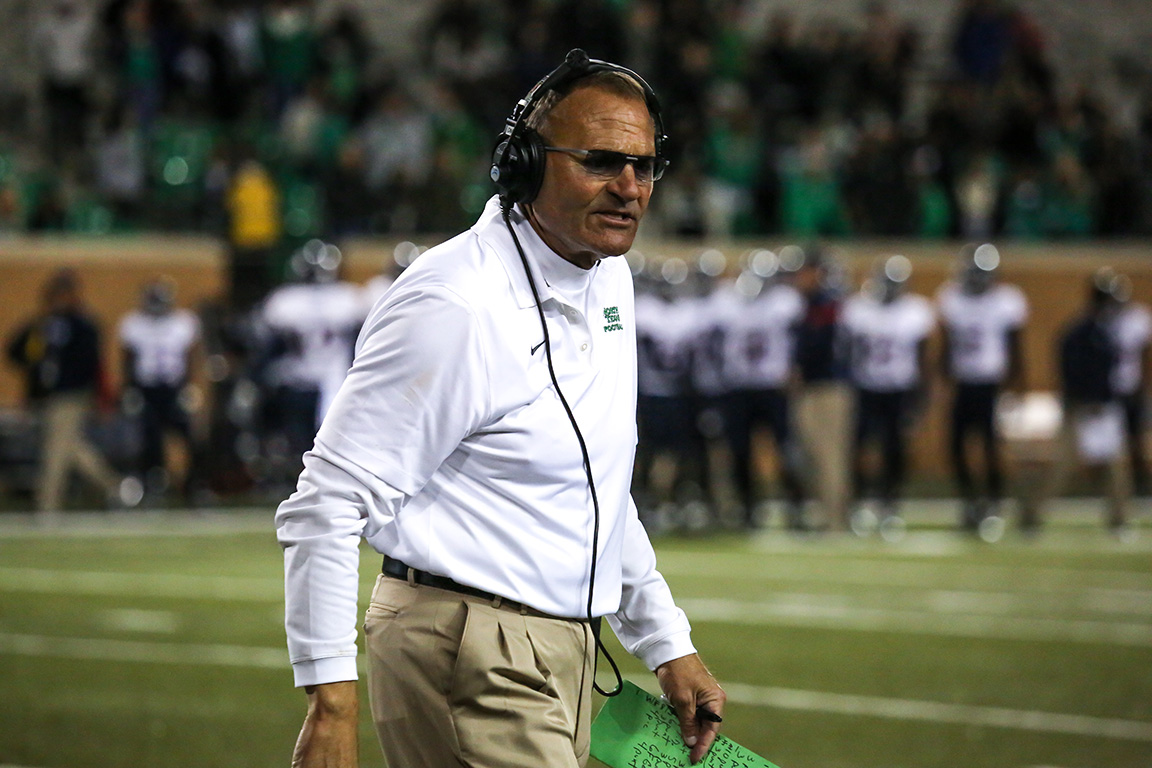
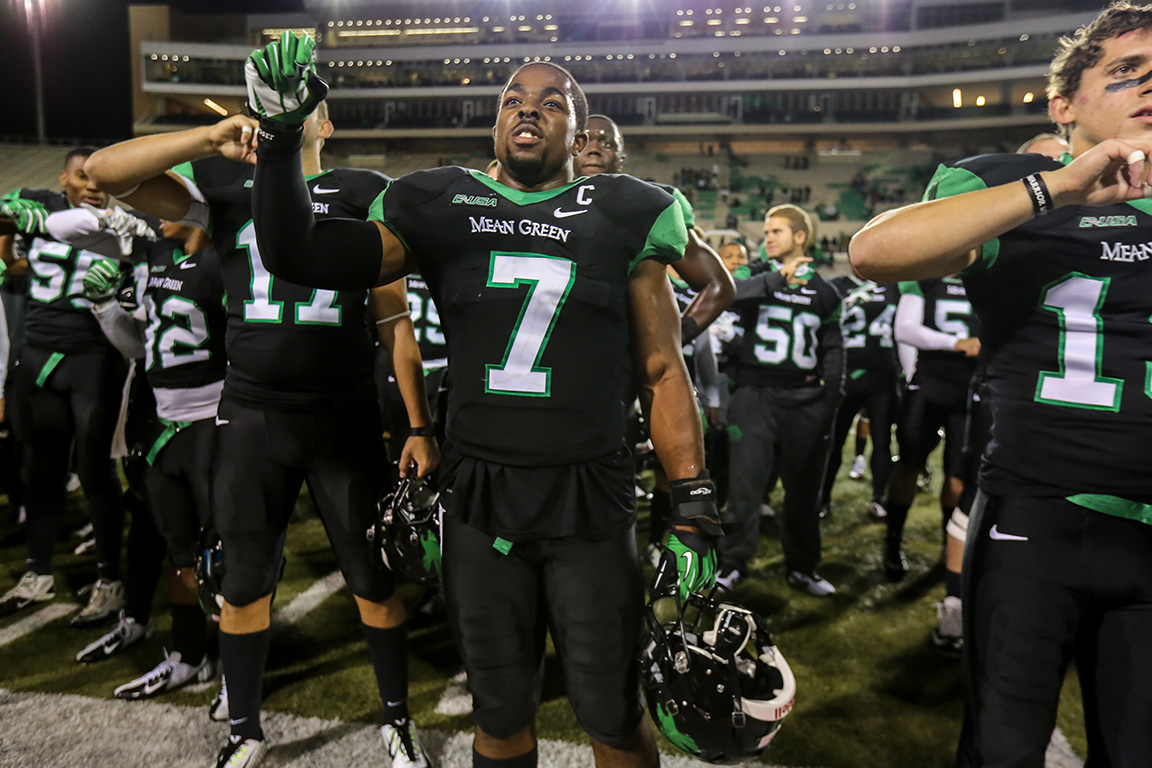
In the next couple of weeks I plan on writing a lengthy post about the economics of sports photography. As exciting and rewarding as it can be, it comes at a high price because there is just so much gear involved.
Anyway, one of the reasons money and camera gear are always on my mind is because I see the limitations of the gear I own every time I look at the final product of my photos. It's frustrating. These photos here were shot at Apogee Stadium in Denton, Texas where I cover the North Texas Mean Green. This game was against conference opponent Florida Atlantic, and unfortunately it was at night.
I wish I could say I own a Canon 1DX and a 400m F/2.8L lens, but I have to do my best with a Canon 5D Mark III, which is an AMAZING camera (don't get me wrong) but it has its limitations with frames per second and noise reduction compared to the former. The lens I typically use for football games is a Canon 100-400mm F/4.5-5.6L IS USM. Again, it's a fantastic piece of equipment but for football games it'd be nice to work with a lens that has a wider aperture so I could condense the backgrounds more for that bokeh effect, especially at a stadium like Apogee that features off-putting brown concrete walls around the field that can be a little distracting. It's also not an ideal lens for night football games because I have to boost my ISO really high if I want to make sure I freeze the action and remove any chance of motion blur in my photos.
In the grand scheme of things, these are really nitpicky criticisms of my work because I walked away with fine photographs, but it's just frustrating to know that the photographers also working the game that night walked away with better photographs because they do have the ideal equipment. And I don't just want to walk away with fine photographs--they should be outstanding. It's just something I have to deal with in the learning stages. What's more important is that I continue to work on my composition, variety and exposure.
